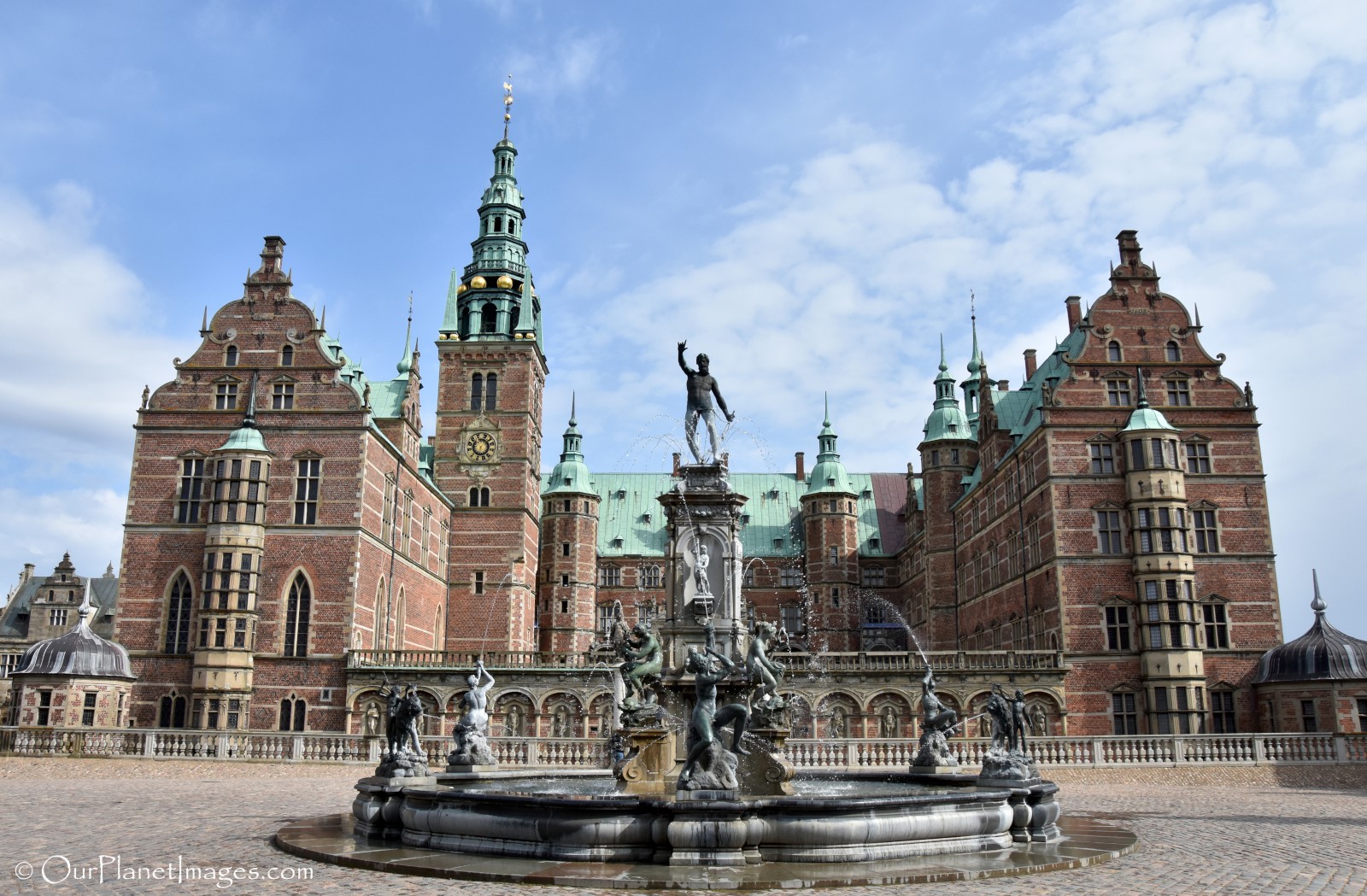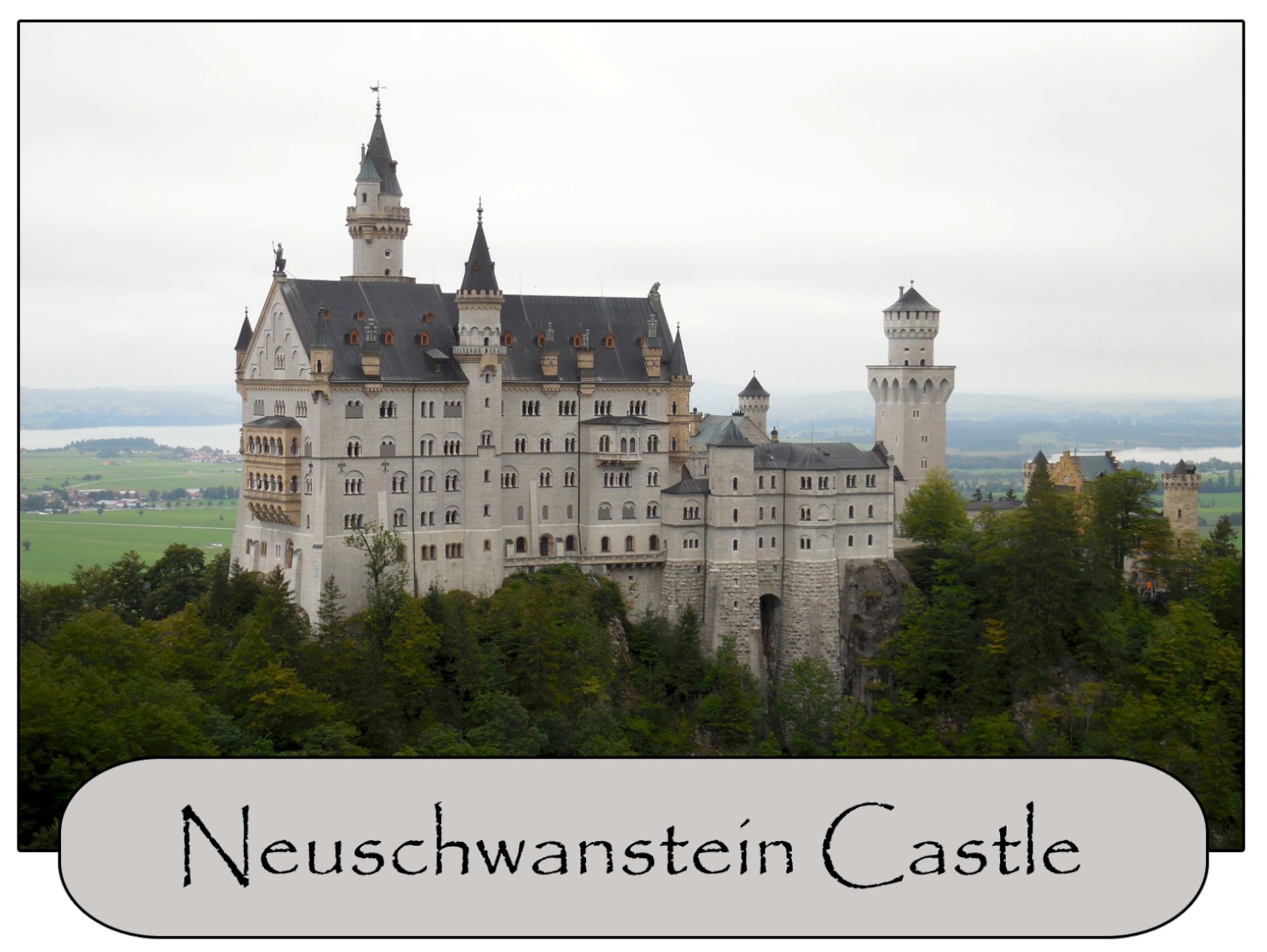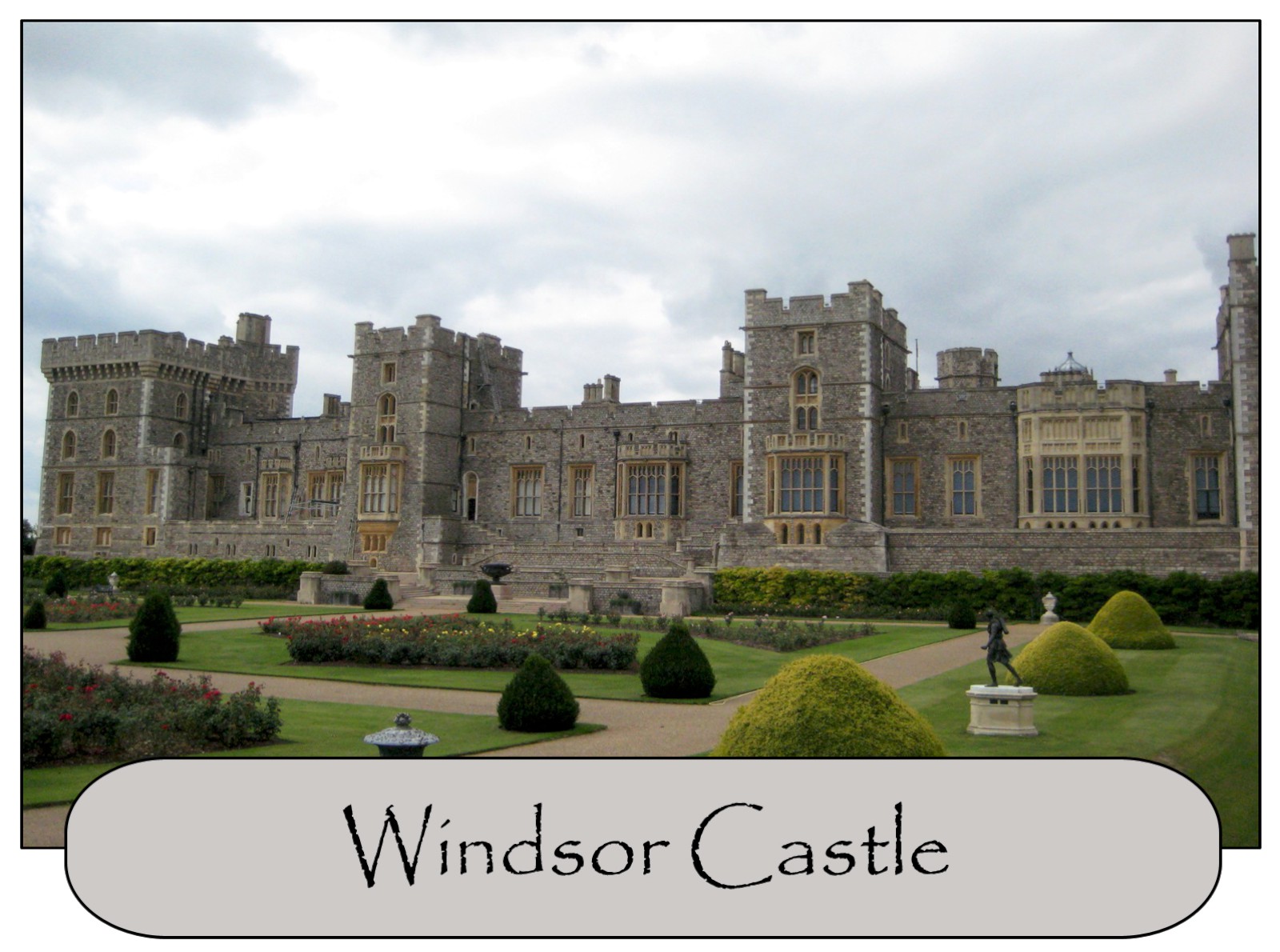Frederiksonborg Castle is the largest Renaissance castle in the Nordic region.
Frederiksonborg Castle is named after Danish King, Federik II and is located in the town of Hillerod, less than an hour outside of Copenhagen, Denmark. The first castle at this site was built in 1560 by Frederik II but his son, Christian IV, demolished his father’s castle and erected the much larger and beautiful Renaissance castle that is seen today. The existing castle was built between 1600 and 1620.
Castle Lake
The castle complex is built on a series of tiny islands on the edge of Castle Lake. The lake primarily served as a leisure area for the king and his court but the moat also helped to protect the castle. The lake makes for nice views of the castle from three sides.
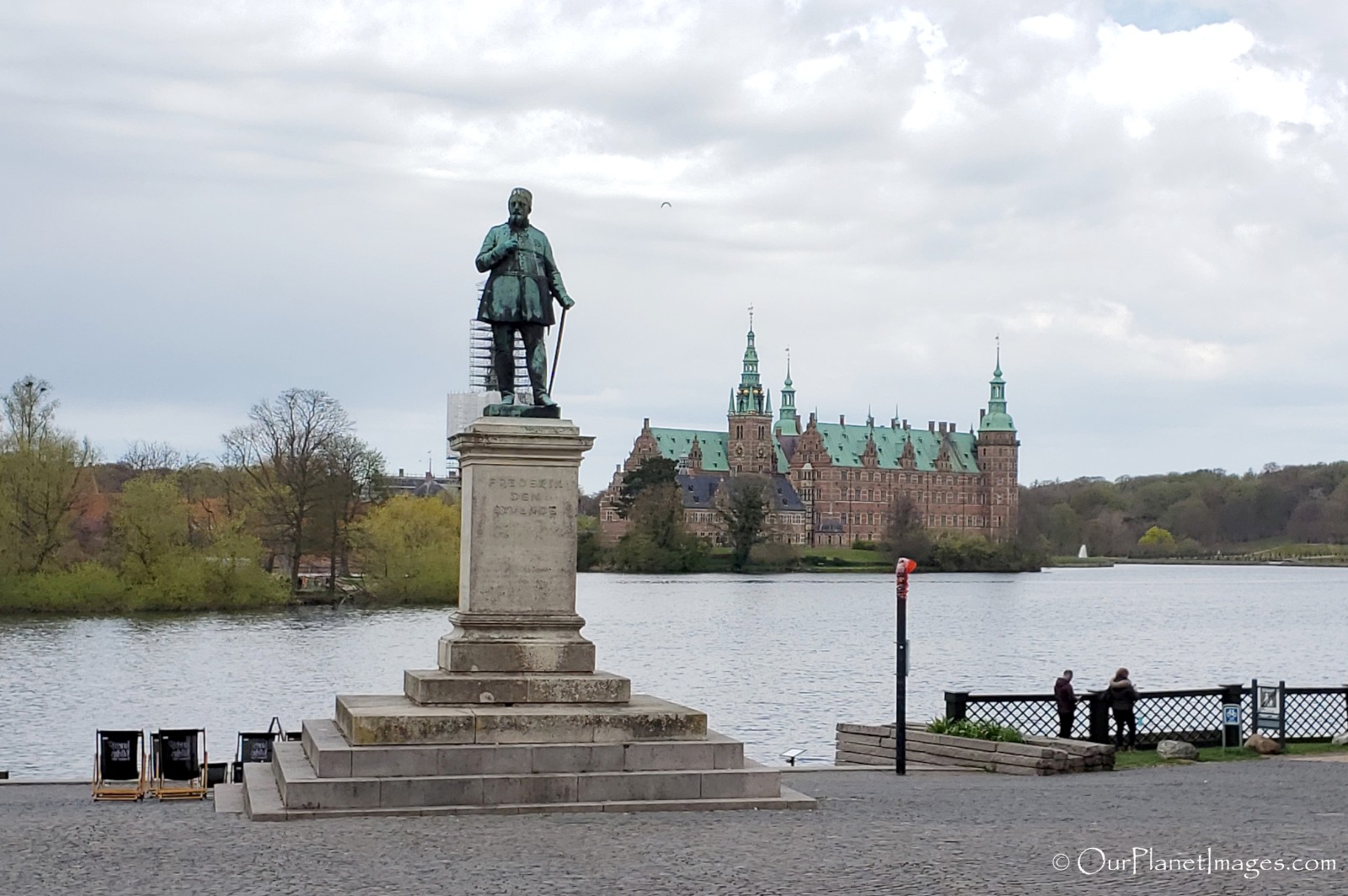
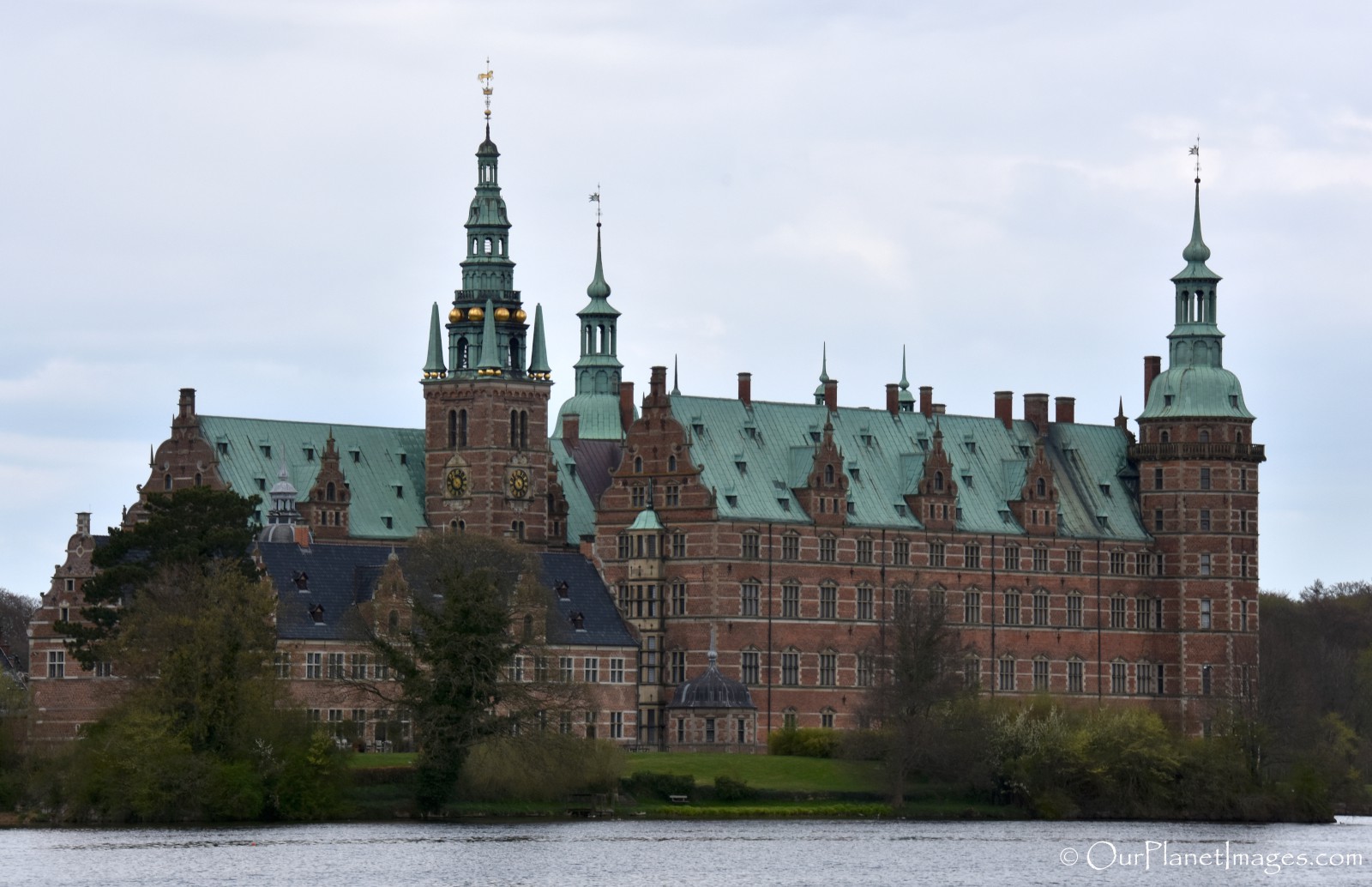
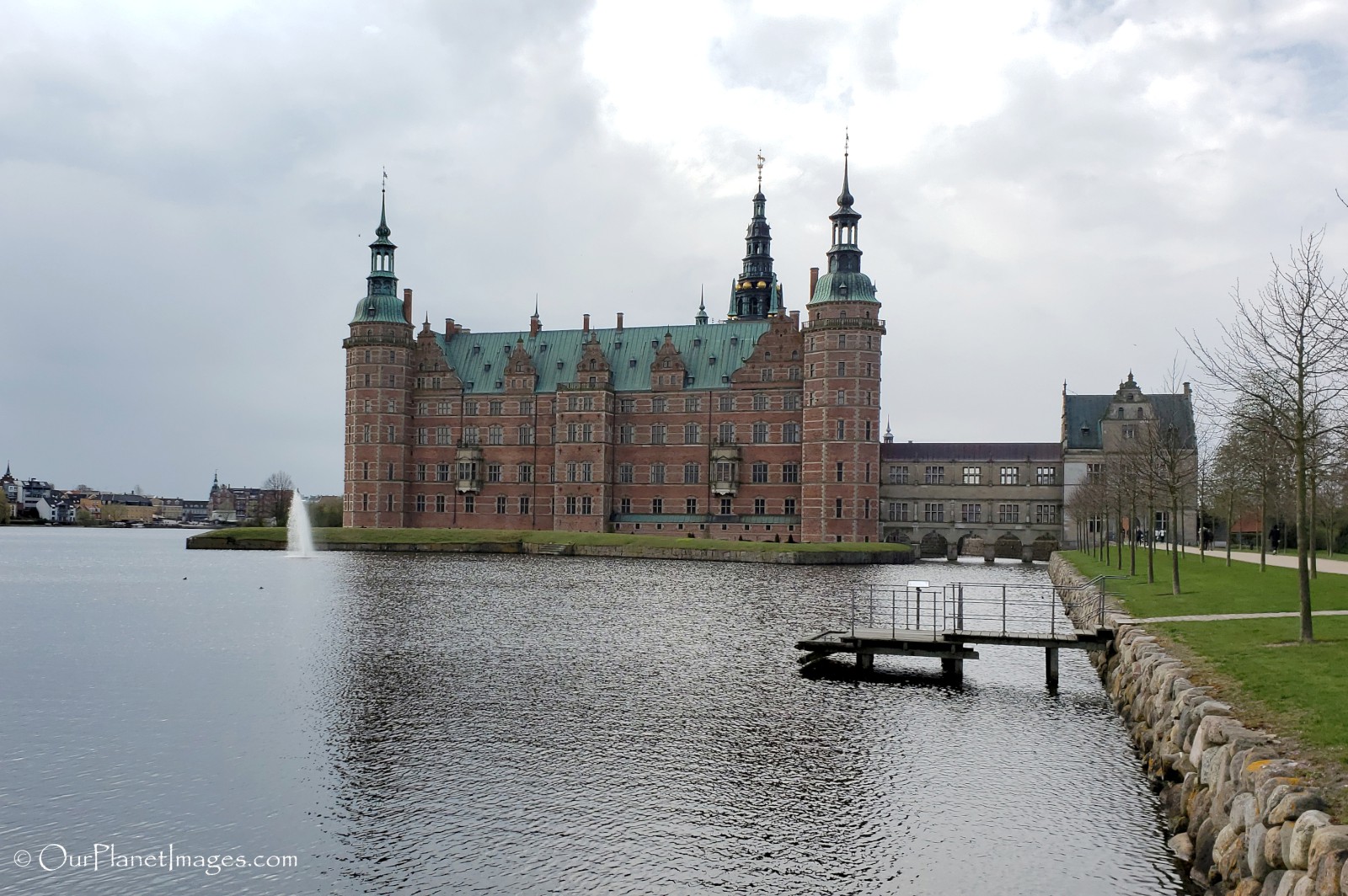
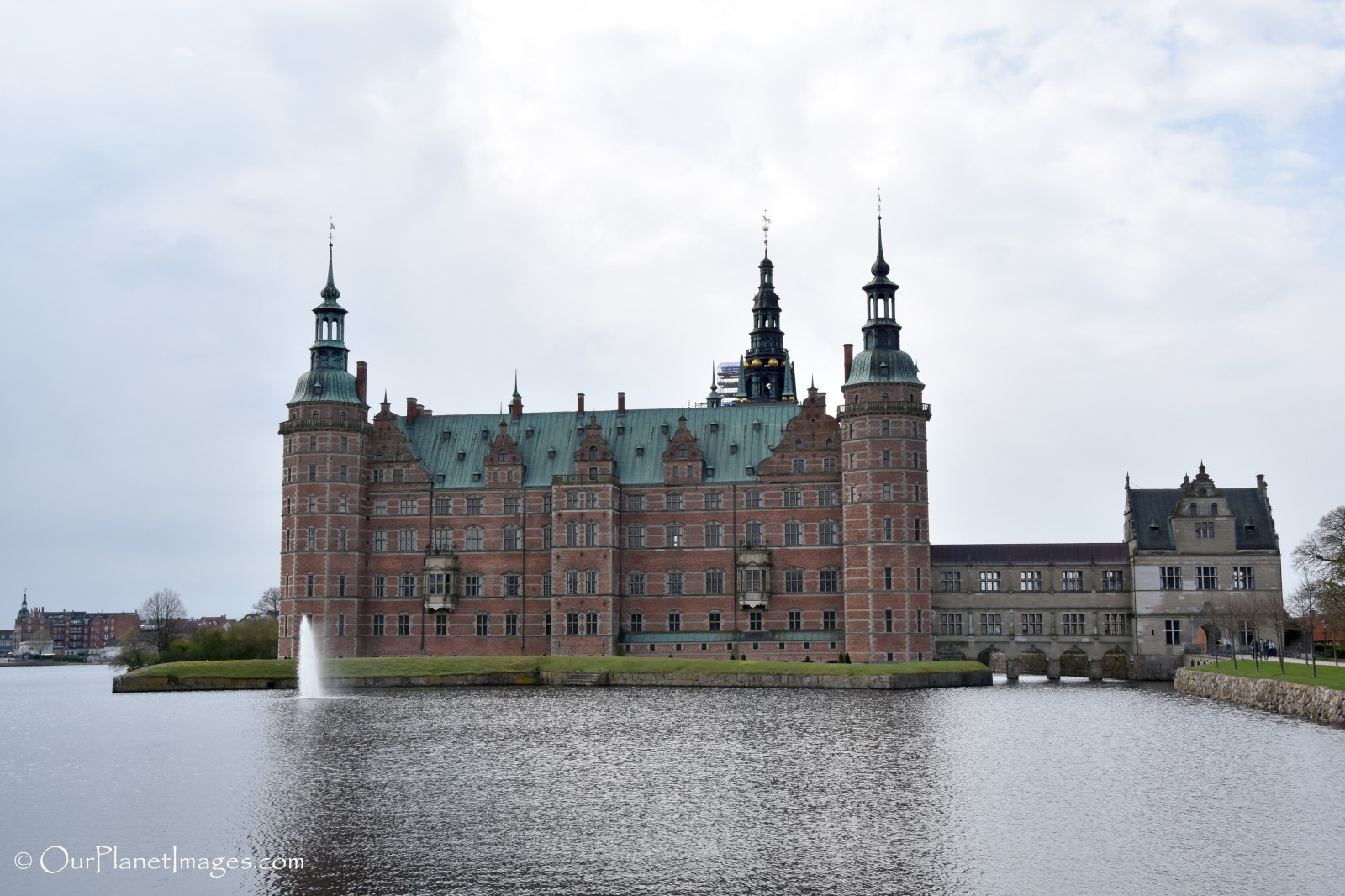
Towers, turrets and spires
One of my favorite features of the castle are towers, turrets and spires. Small turrets are at the base of the castle, large towers are on the back side of the castle and many spires project up from the castle gables and windows.
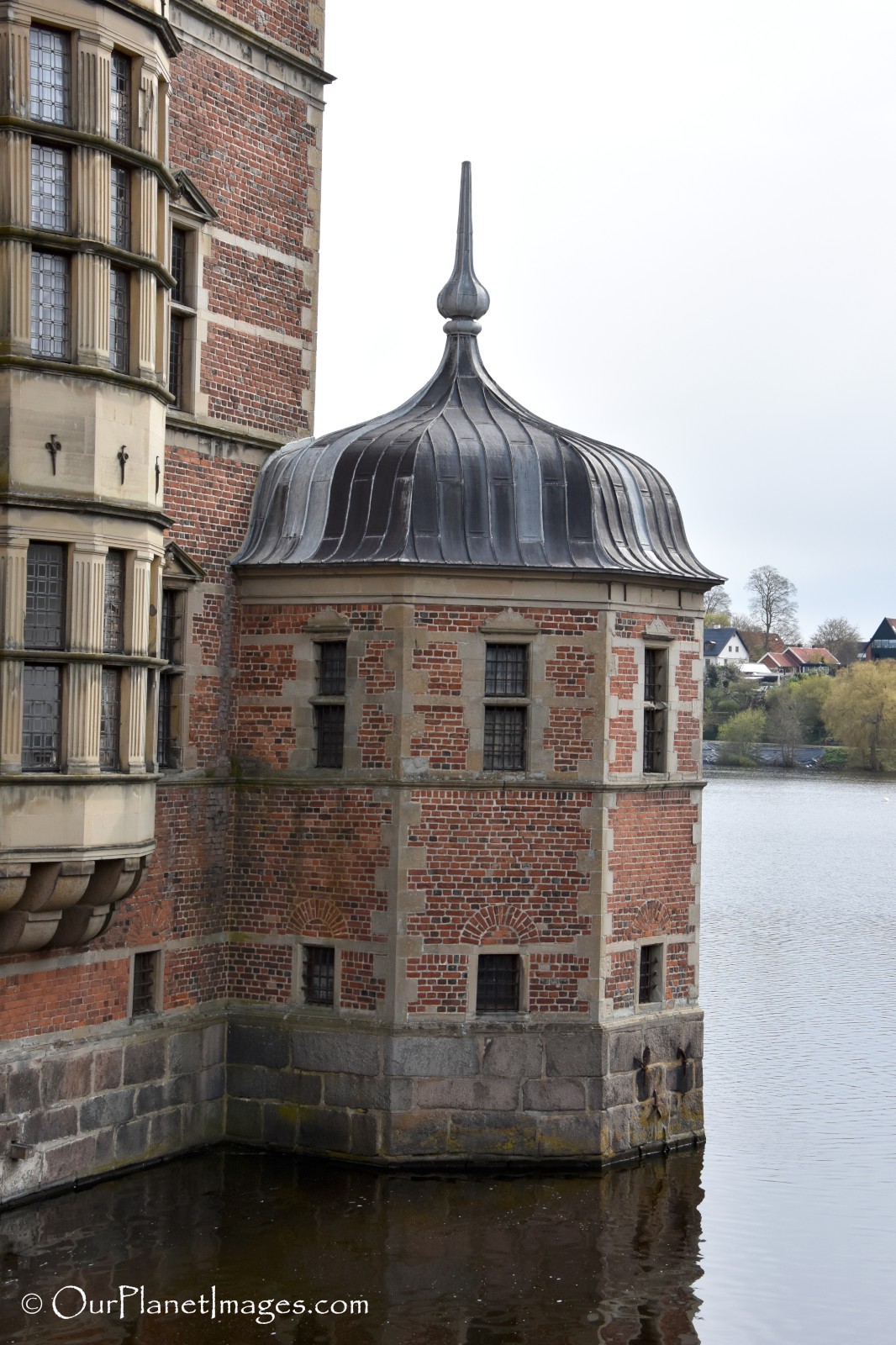
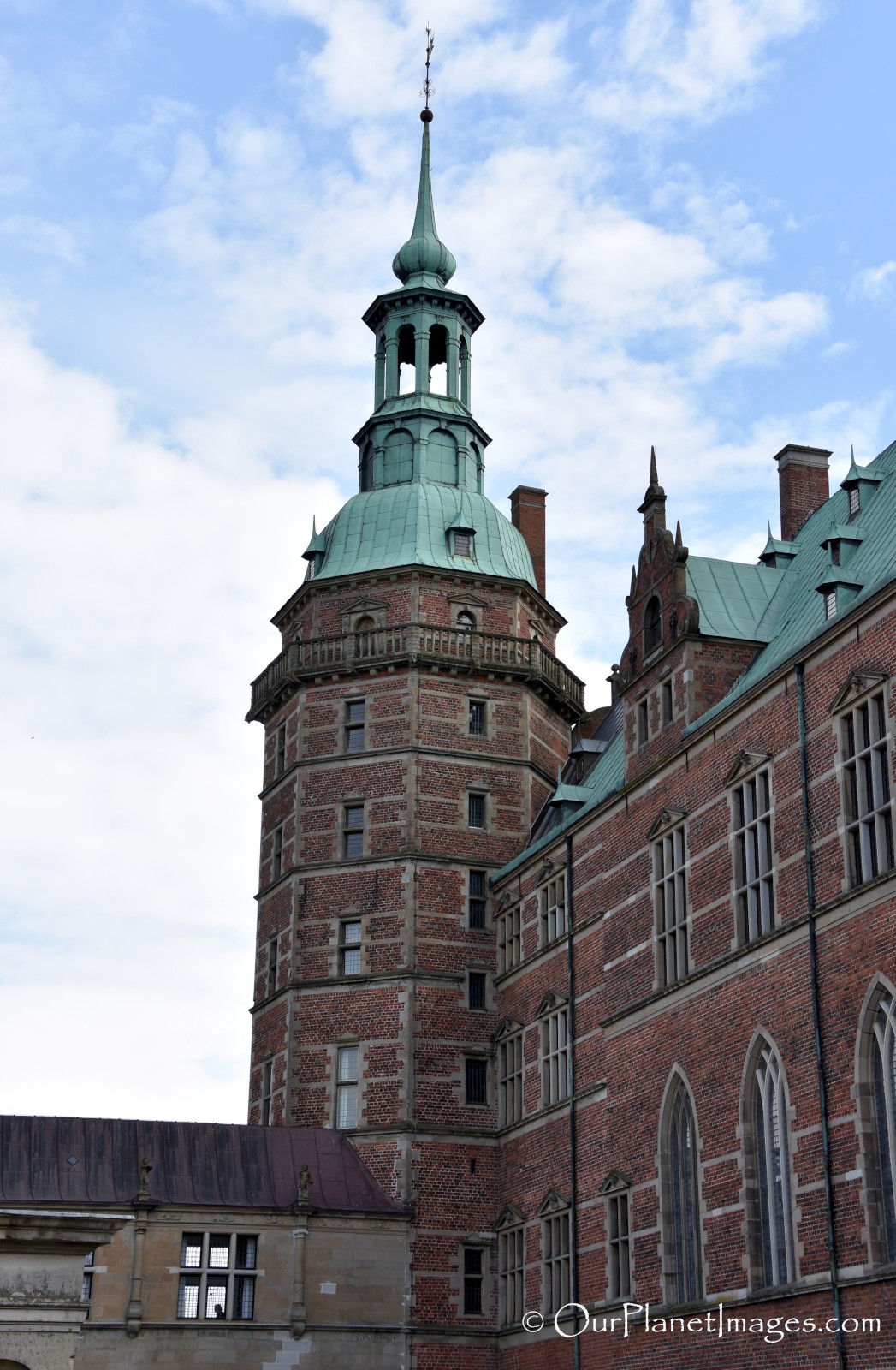
Inside the castle courtyard is the clock tower which is the largest tower and has golden clock faces on two sides, facing the courtyard. The traditional points of the clock’s dials are replaced with star bursts and the face of the clock is golden sun.

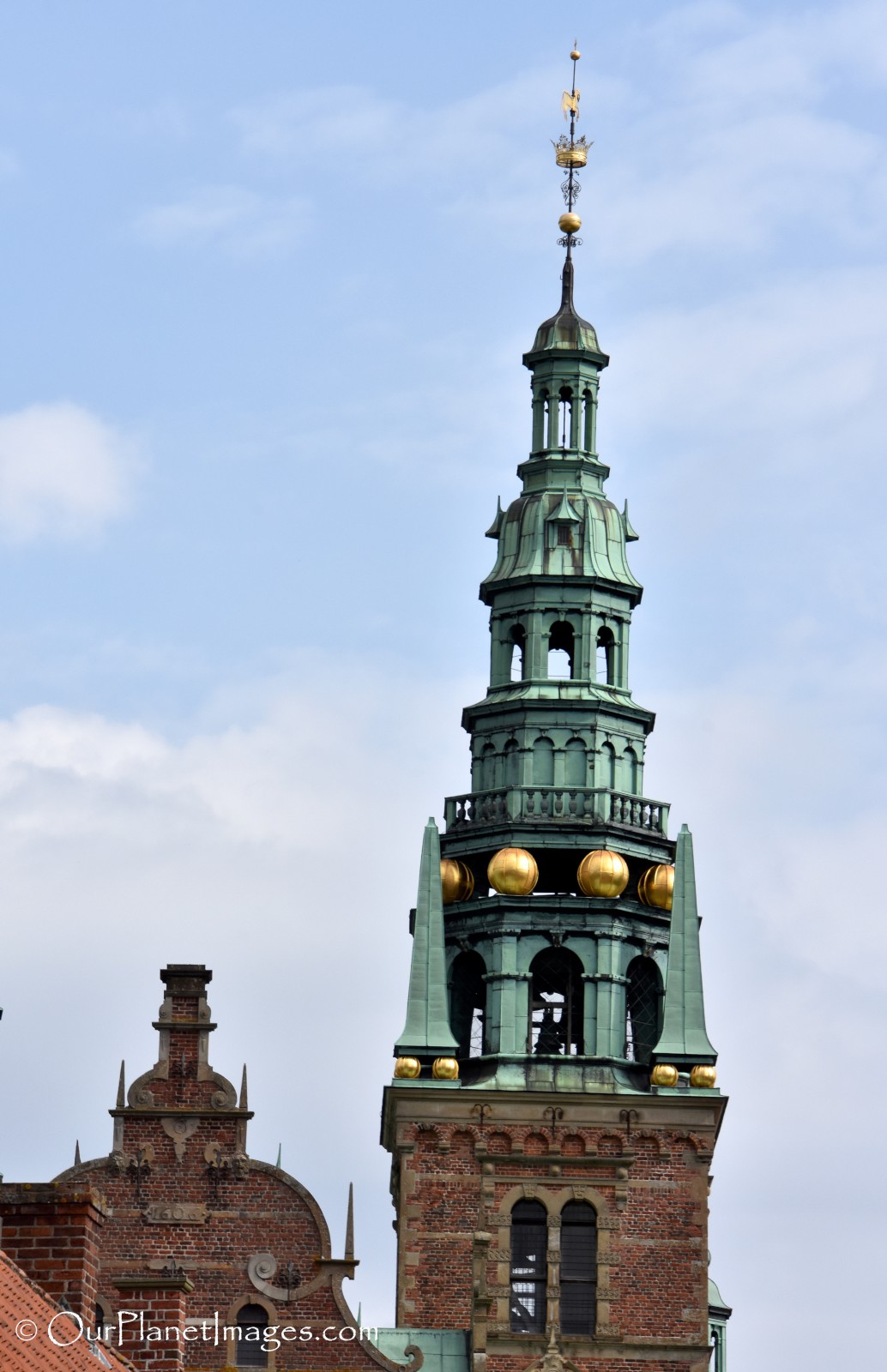
Neptune fountain
In the center of the entry courtyard is the impressive Neptune Fountain. The fountain was made in honor of the naval forces in Denmark. Neptune, the sea god, is on top of the fountain with his hand pointing to the entrance of the courtyard. In his other hand is his trident.
Below him, on the central column, are river and spring deities which are standing on pedestals. Surrounding the basin of the fountain water nymphs playing seashell trumpets with water shooting into the air from the seashell.
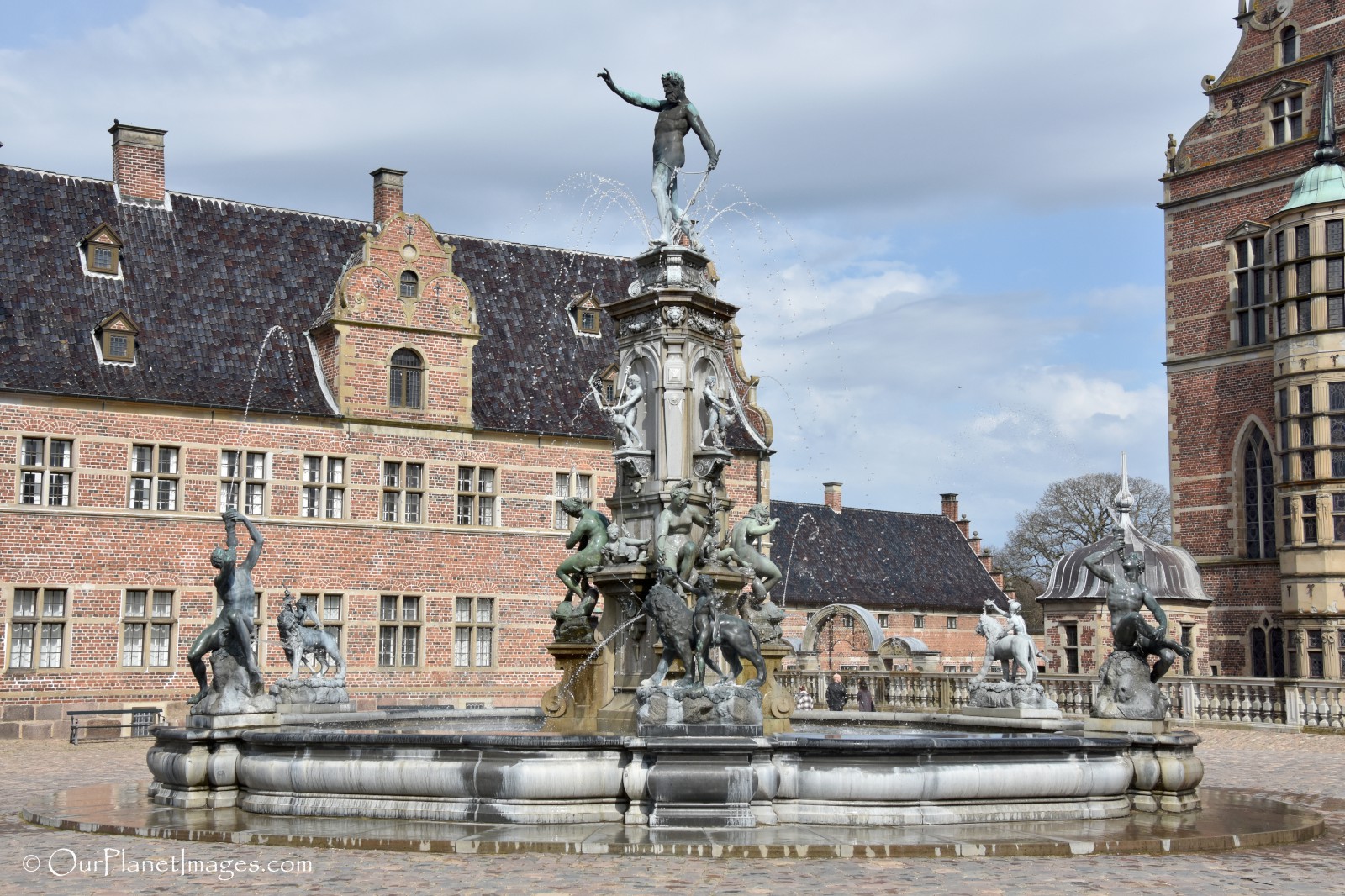
Castle entrance
There are two entrances into the castle which are the main entrance and the side entrance. The main entrance is just past the Neptune Fountain and across a small bridge that is marked with statues on pedestals each side of the entry and lions of each side of the exit.
Guarding the entrance to the castle is a large central doorway that leads into the castle’s primary courtyard. On both sides of the doorway are a series of sculptures of character from astrology and mythology under arches.
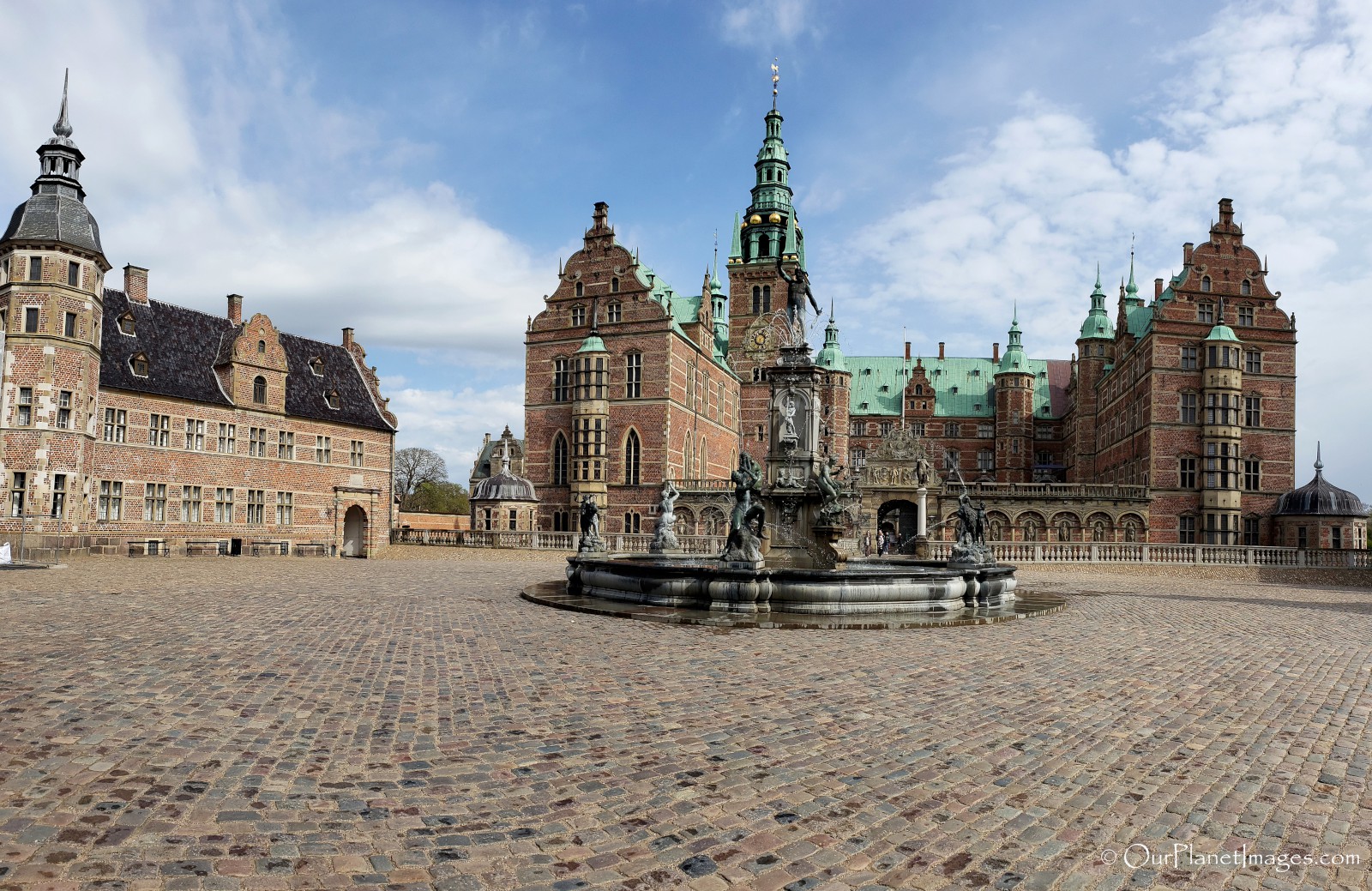

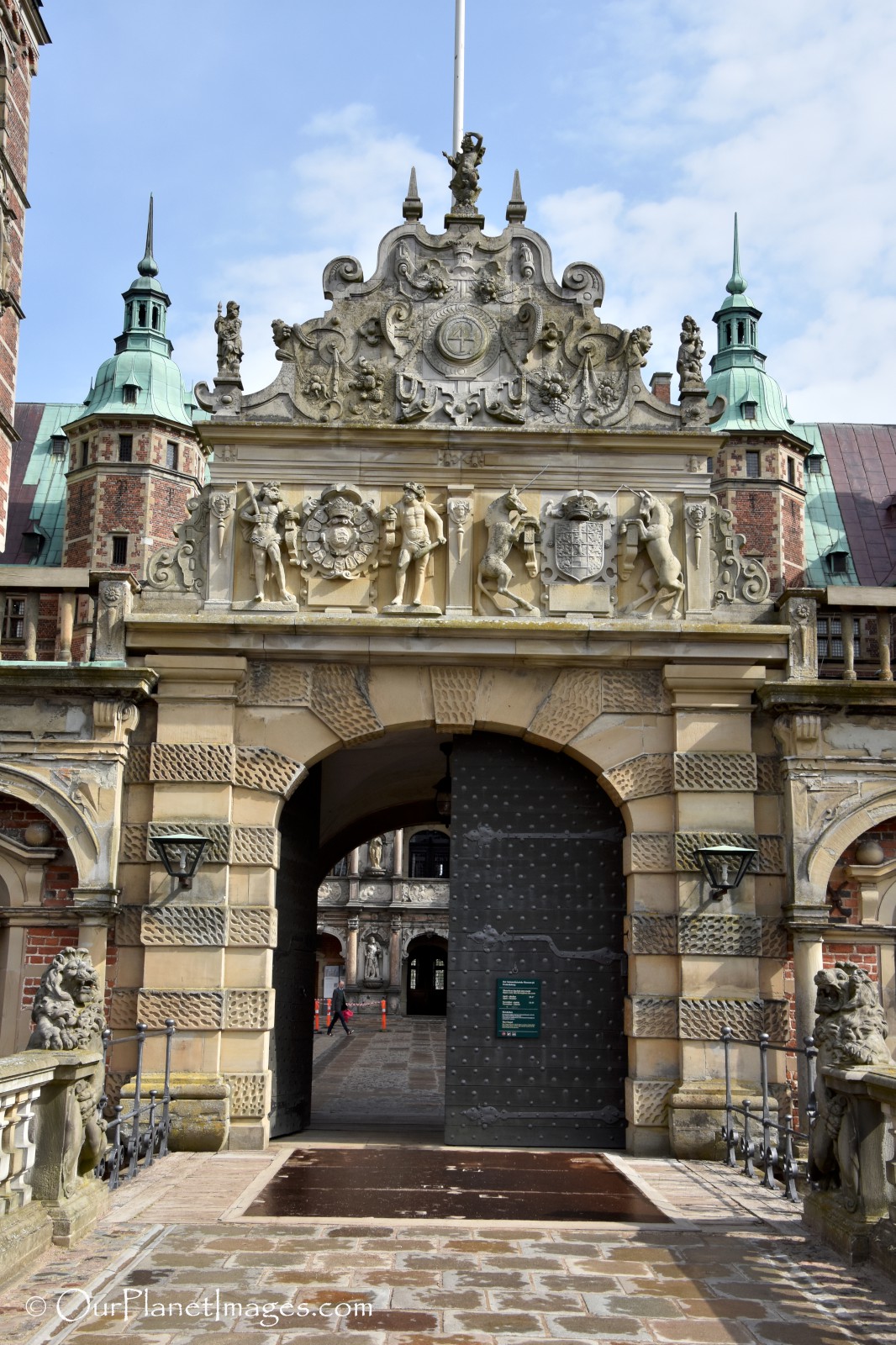
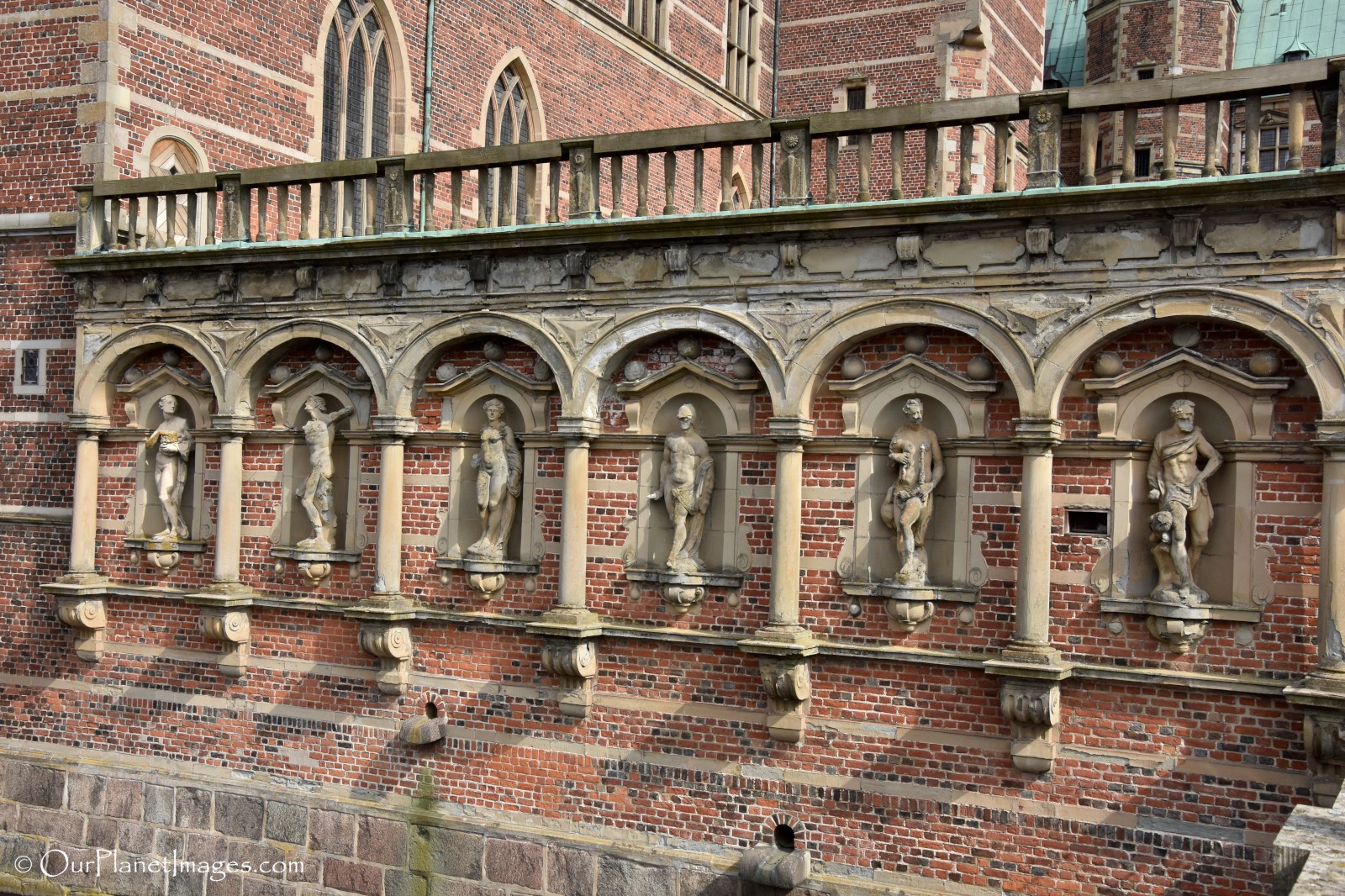
The second entrance is on the side of the castle and offers a pass through to the castle garden and the other castle grounds.
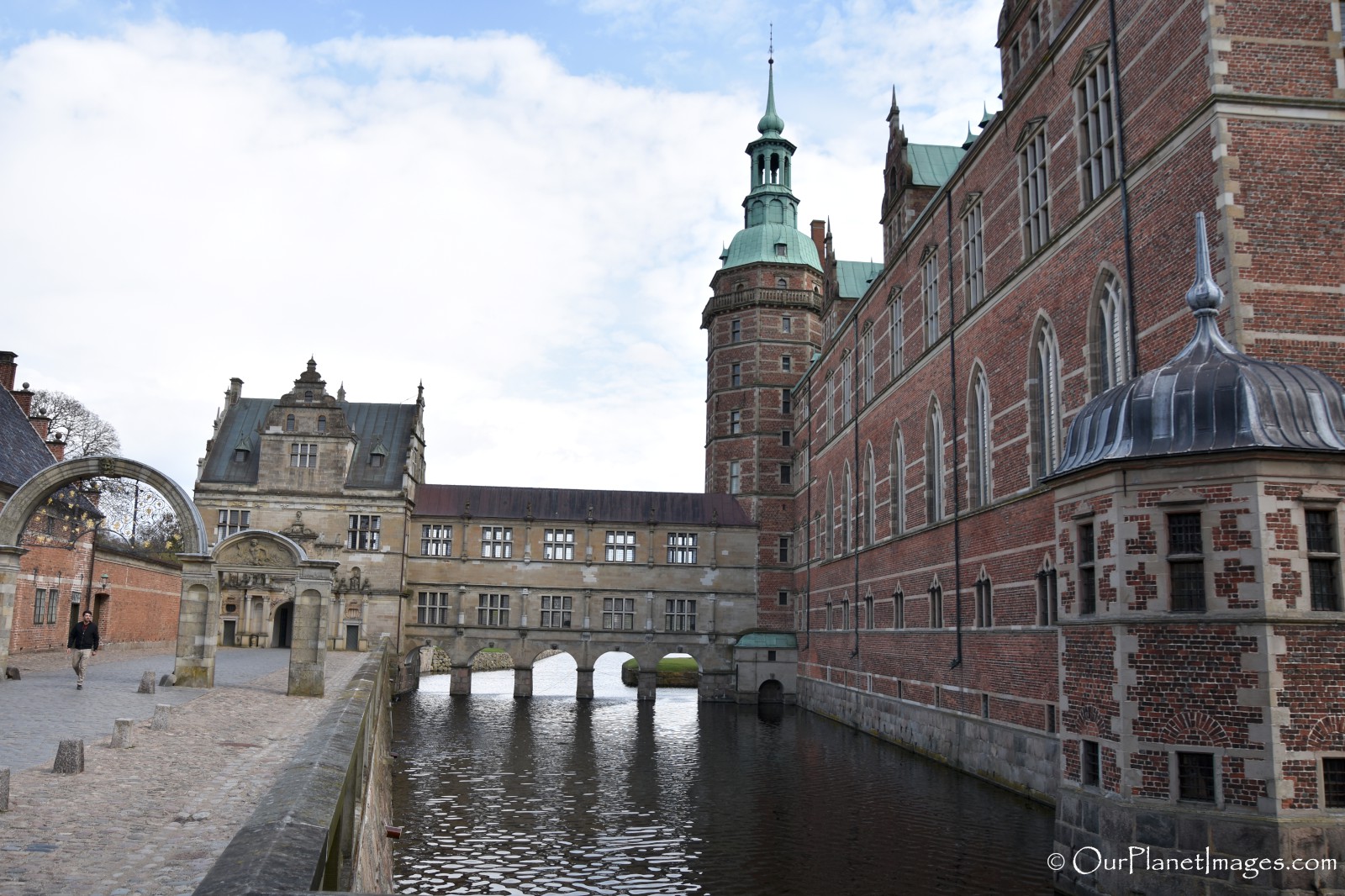
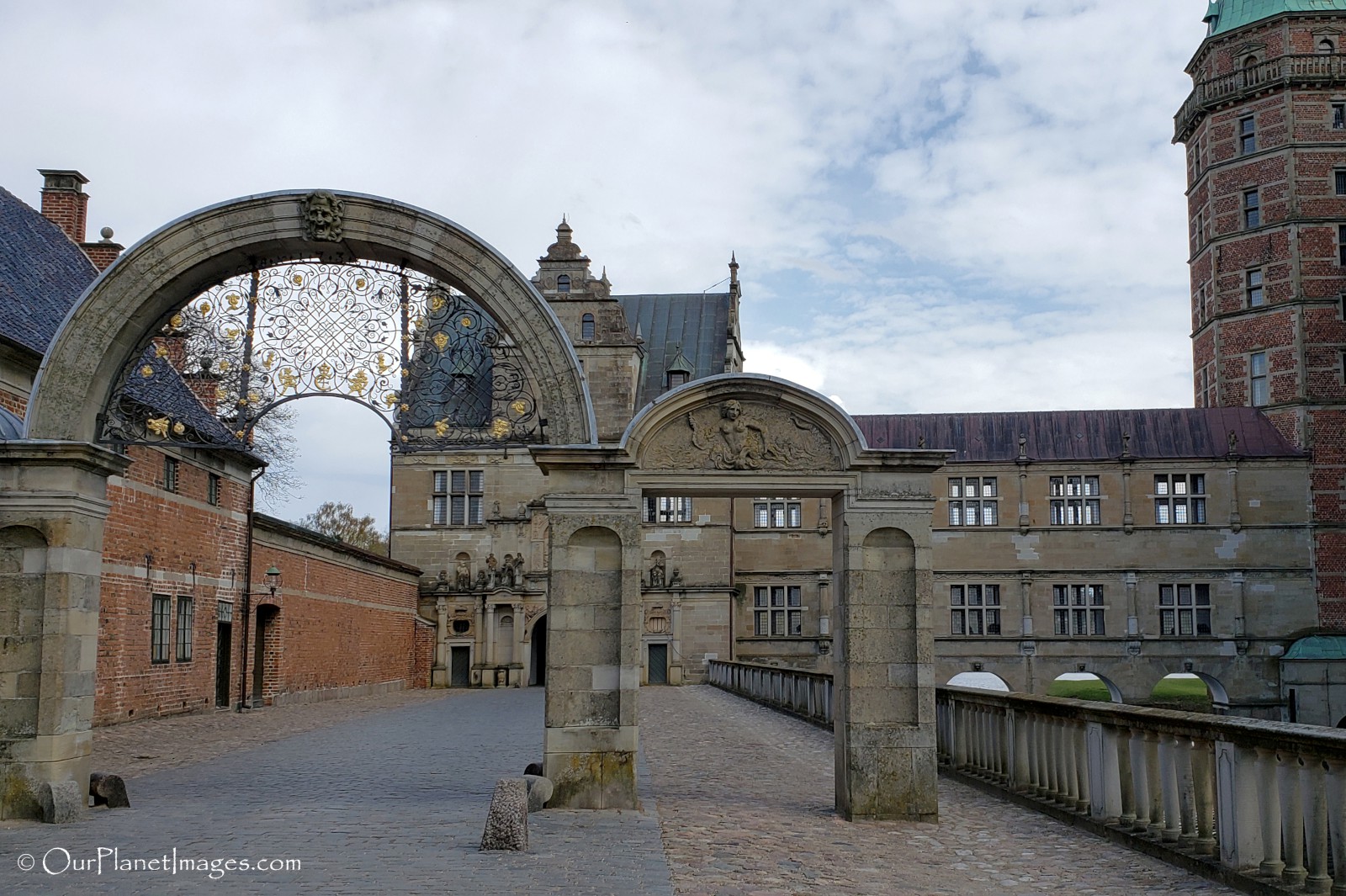
Inner courtyard
The main entrance opens into the inner courtyard. Opposite of the main entrance door is the great gallery from 1621. The gallery is made up of a series of sculptures representing various gods and notable historical leaders. The other focal point of the courtyard is the clock tower.
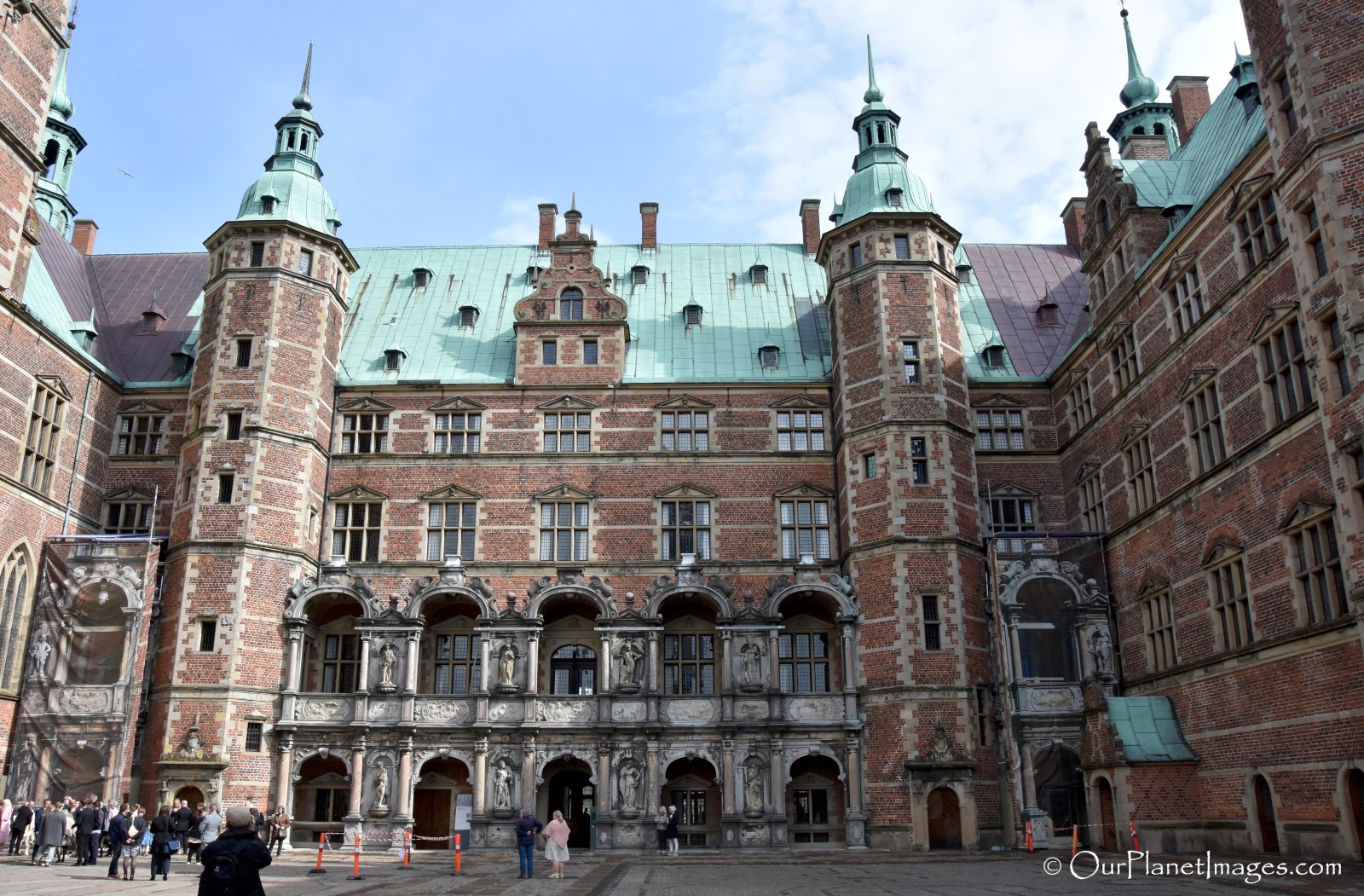
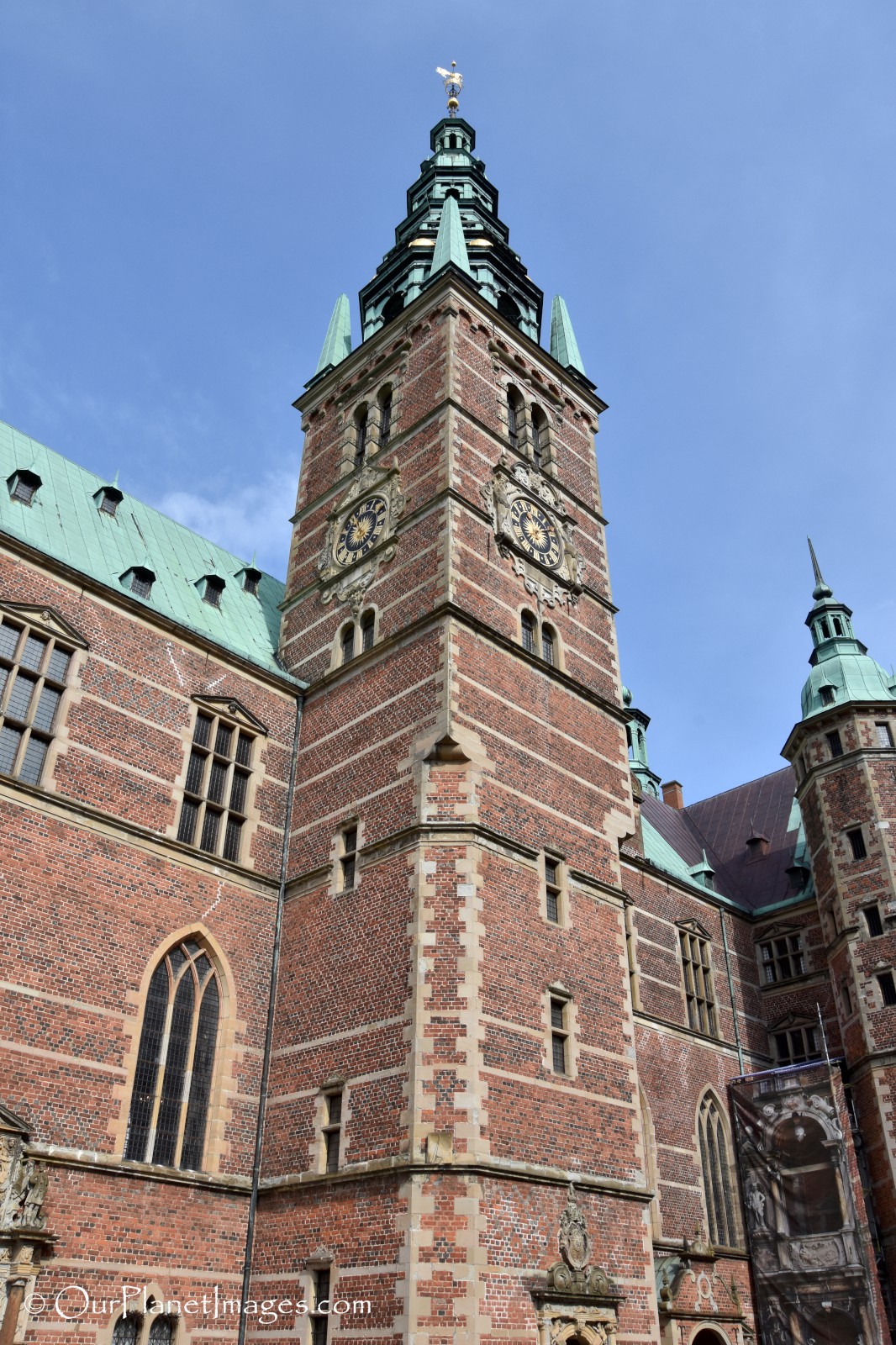
Inside the castle
The most impressive aspect of the castle is the interior furnishings. The castle is decorated to look as if it is still inhabited. The castle has dozens of rooms that are filled with portraits, historical paintings, period furniture and lots of statues. All of the rooms are packed from floor to ceiling with furnishings that were meant for kings and queens.
Frederiksborg Castle is meticulously curated because it is the Danish Museum of Natural History and touring the castle is intended to allow visitors to journey through Danish history and culture from the Middle Ages to present day.
There is so much to see inside the castle that it starts to become overwhelming and there is no way to begin to describe everything in all of the different rooms. The best way is to show a few choice pictures of some of the rooms and to highlight a couple of other areas. The following photos are a few of the rooms and a small portion of the ceiling details that are literally a work of art.
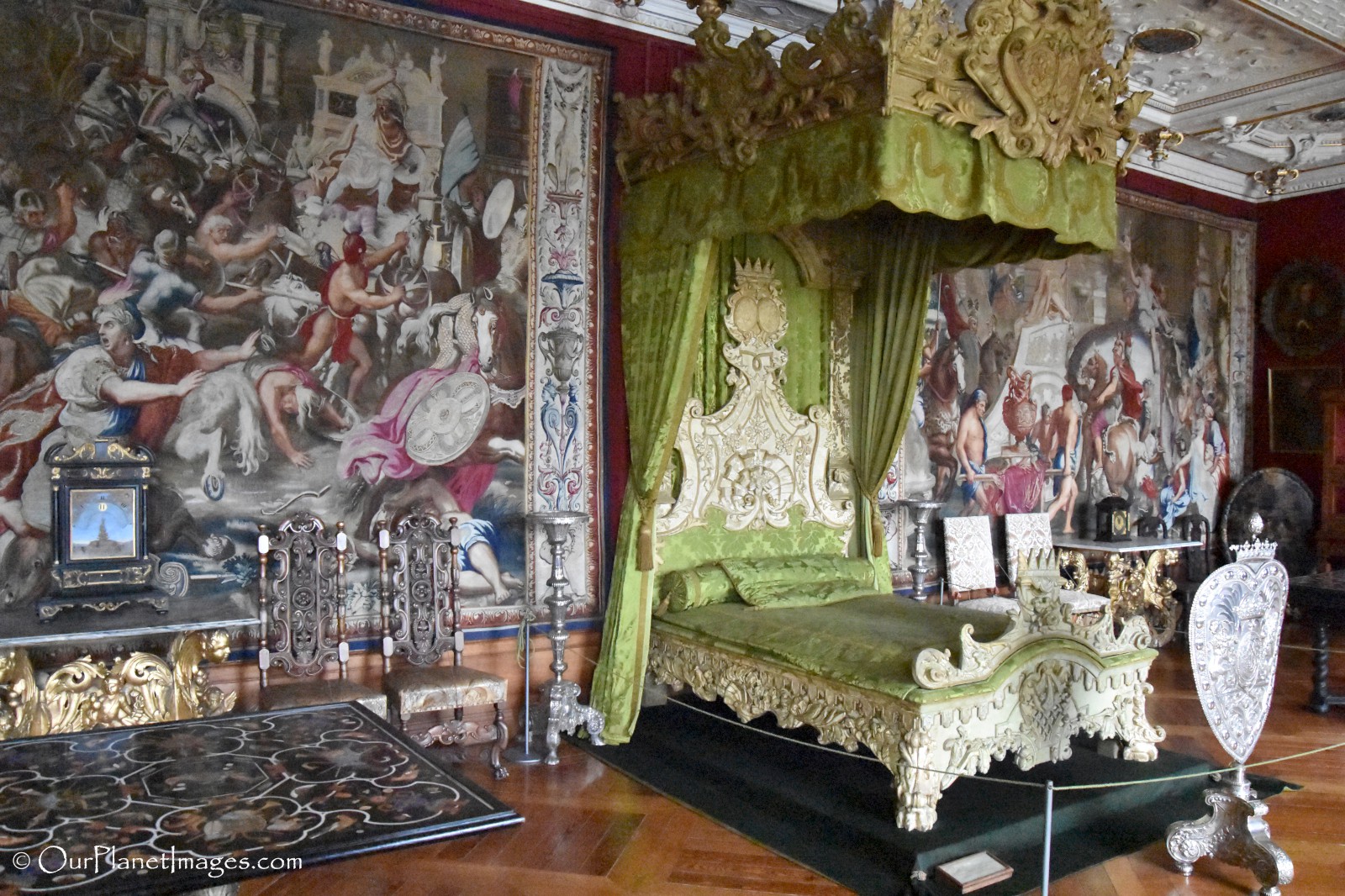
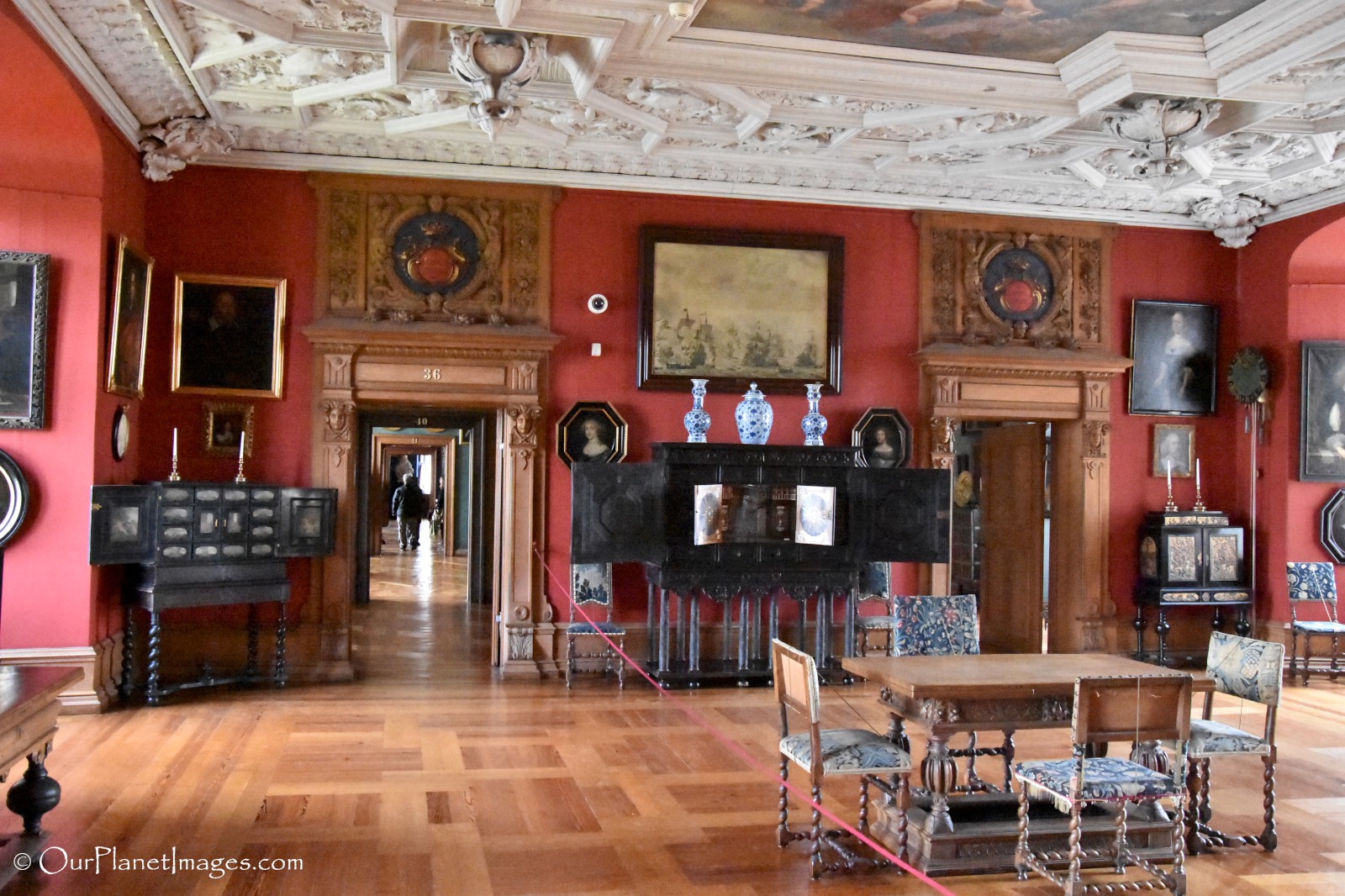

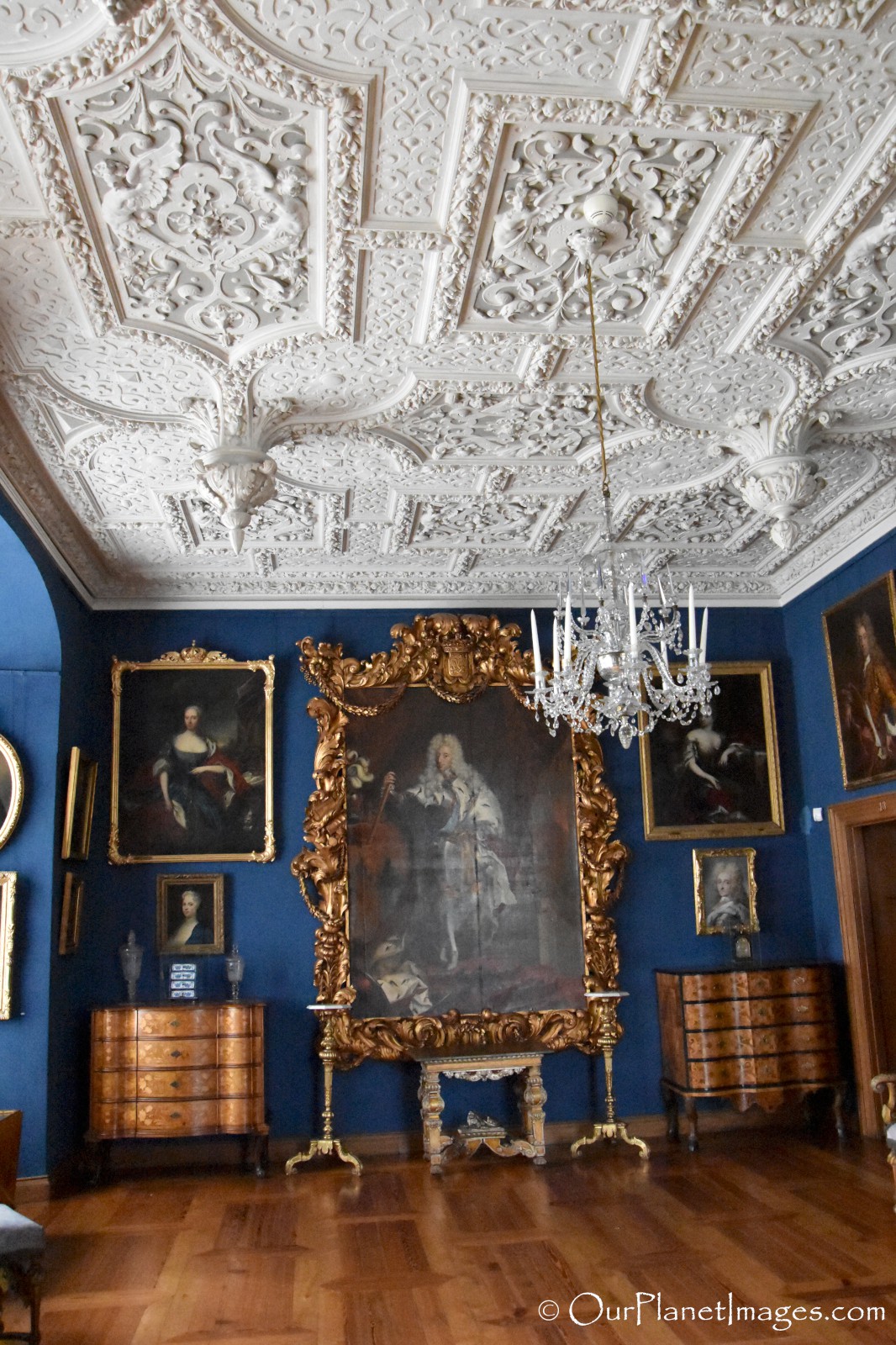
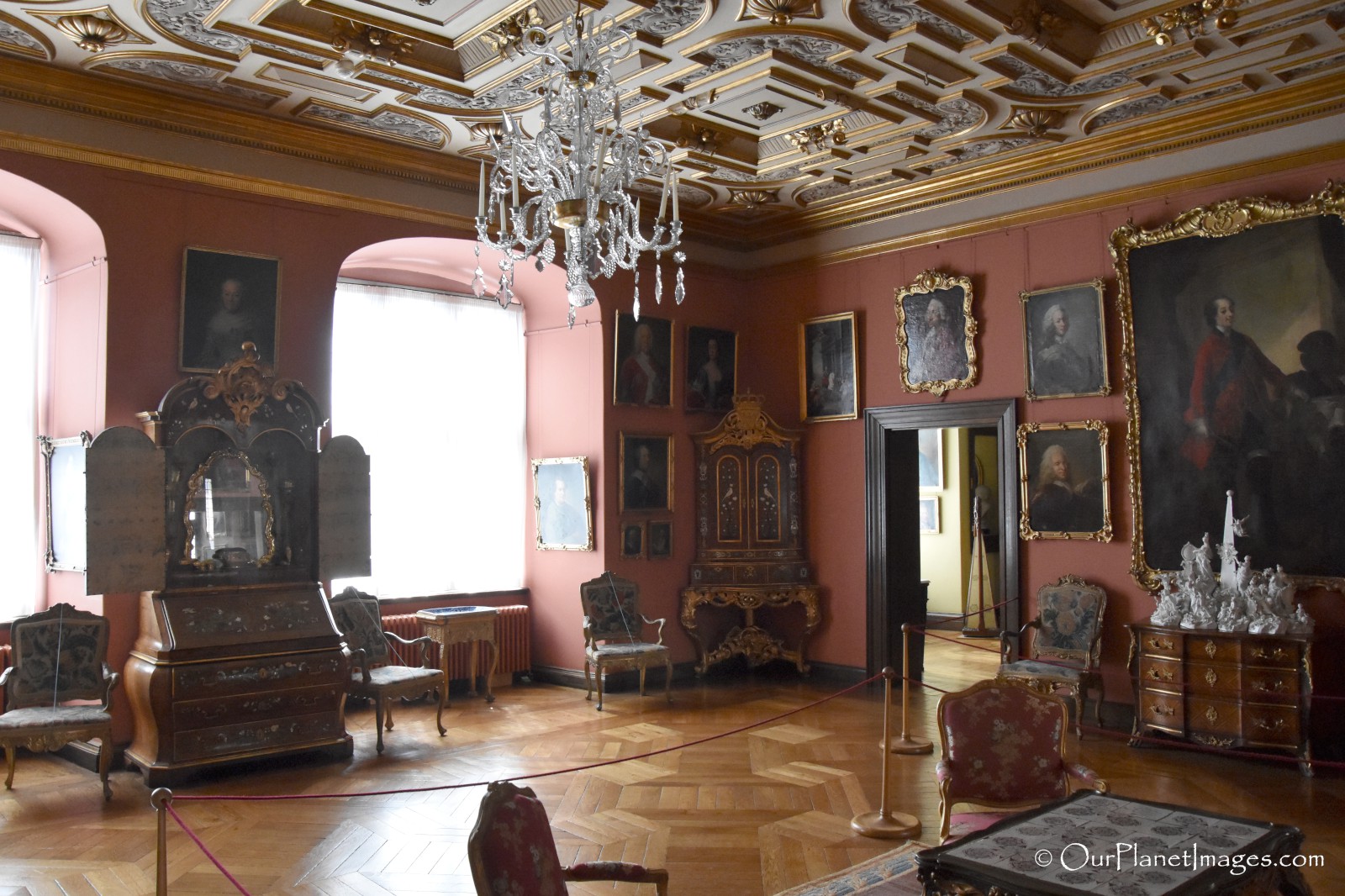
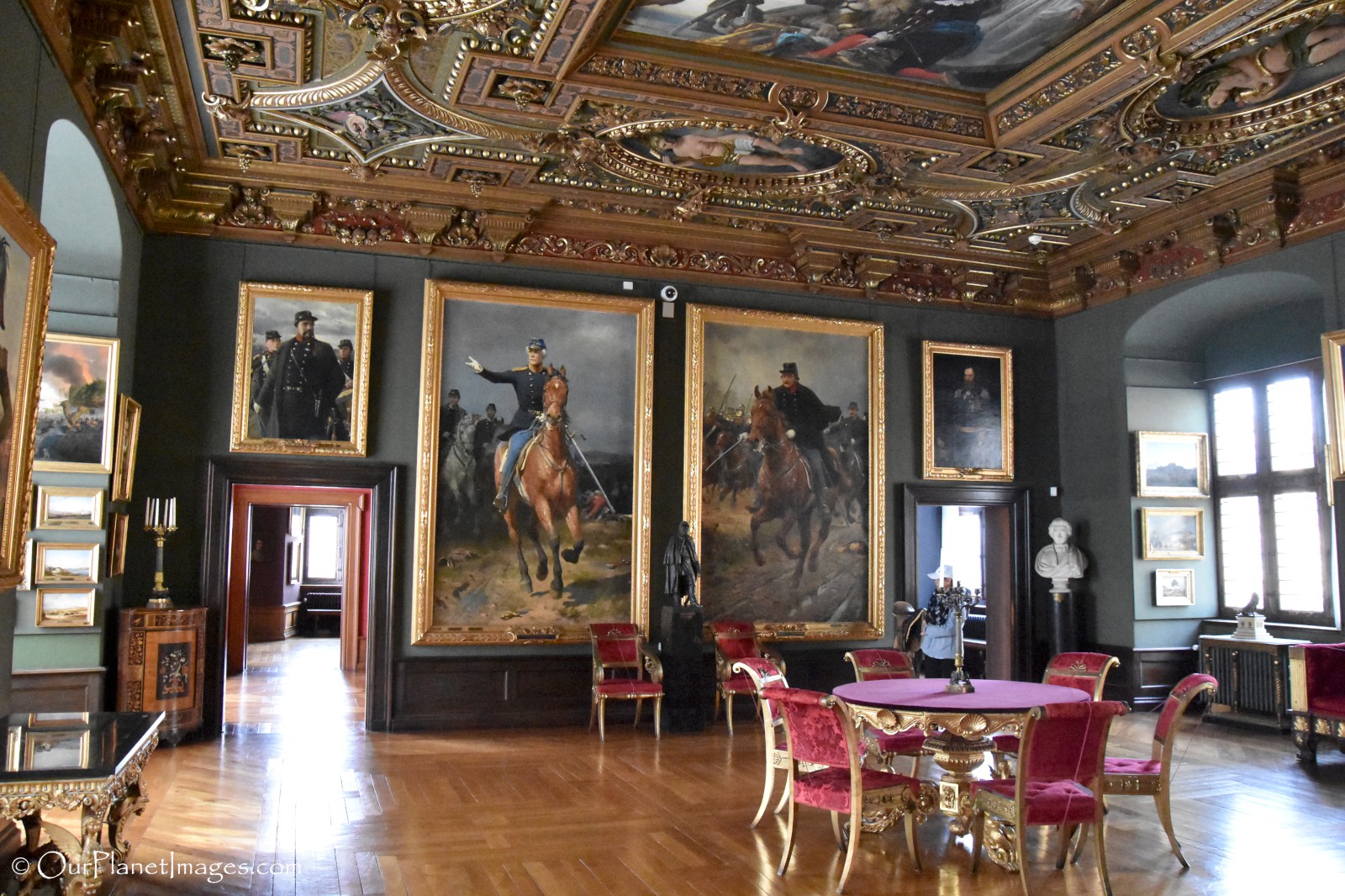


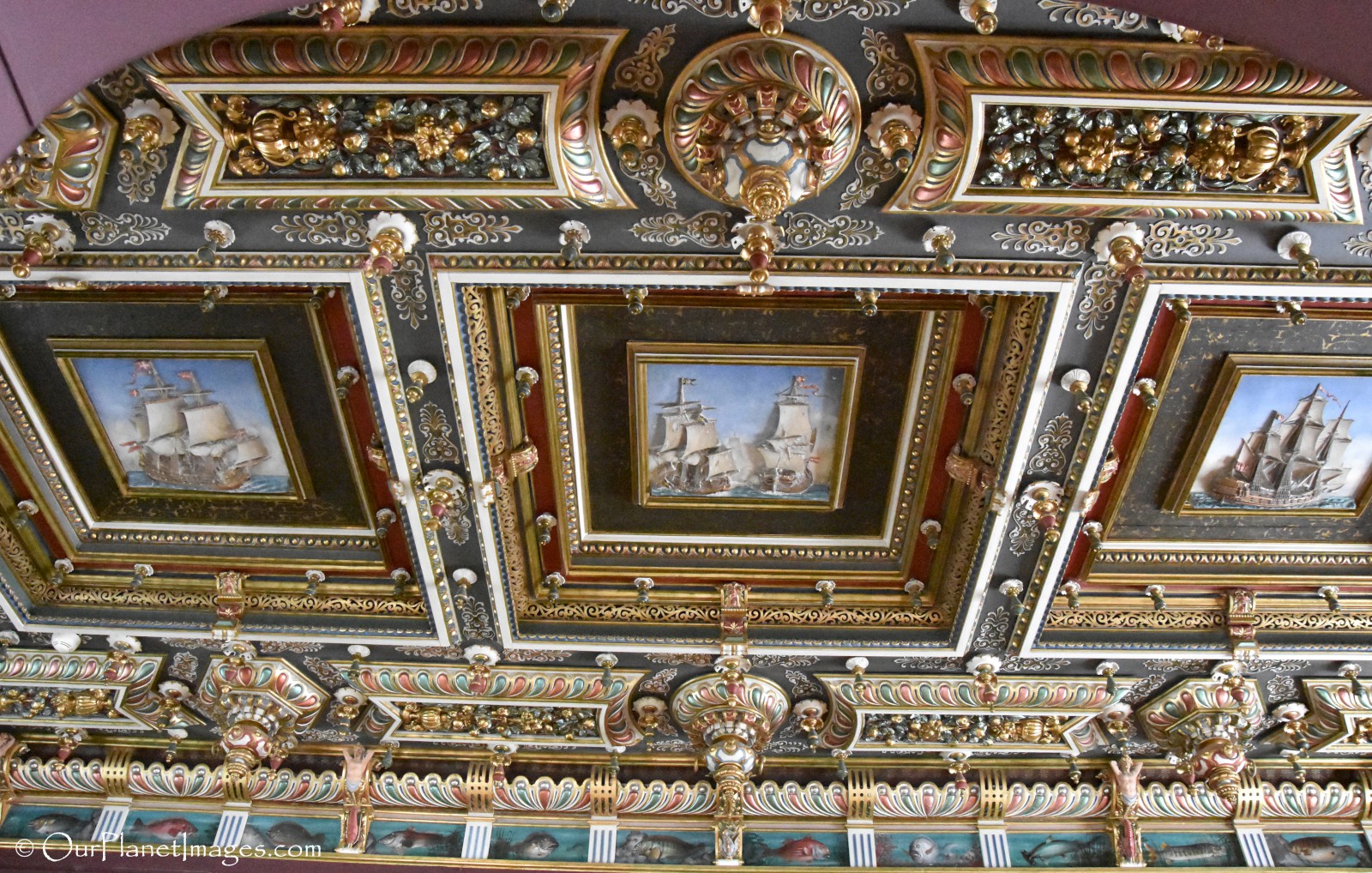
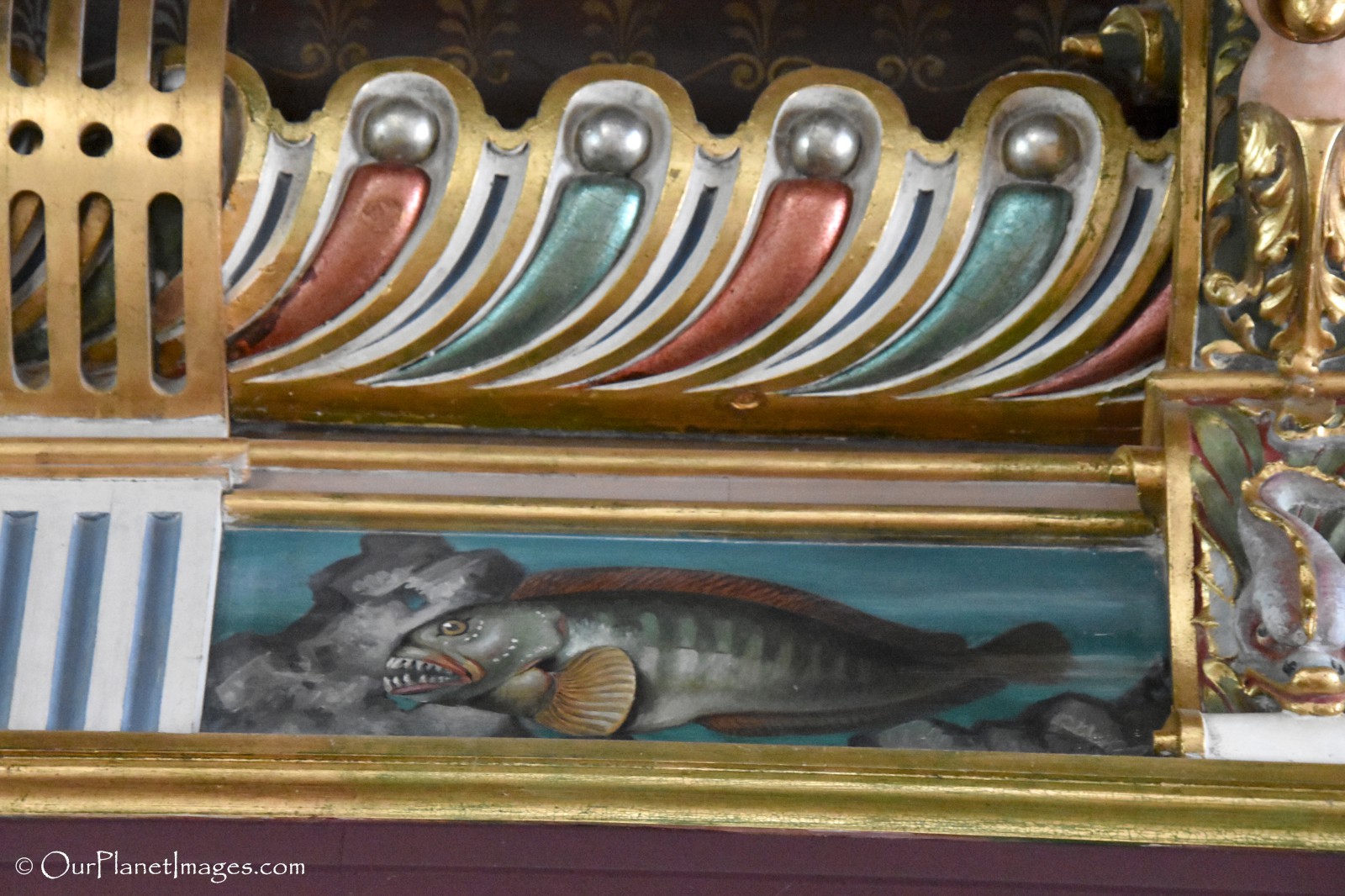
The Rose Dining Room
The Rose Dining Room is a recreation of the great Dining Room of King Christian IV. This dining room was where the court could come and be themselves away from the eyes of the public. My favorite part of the room was the white stucco arched ceiling. In the center of each arched area are various royal symbols.

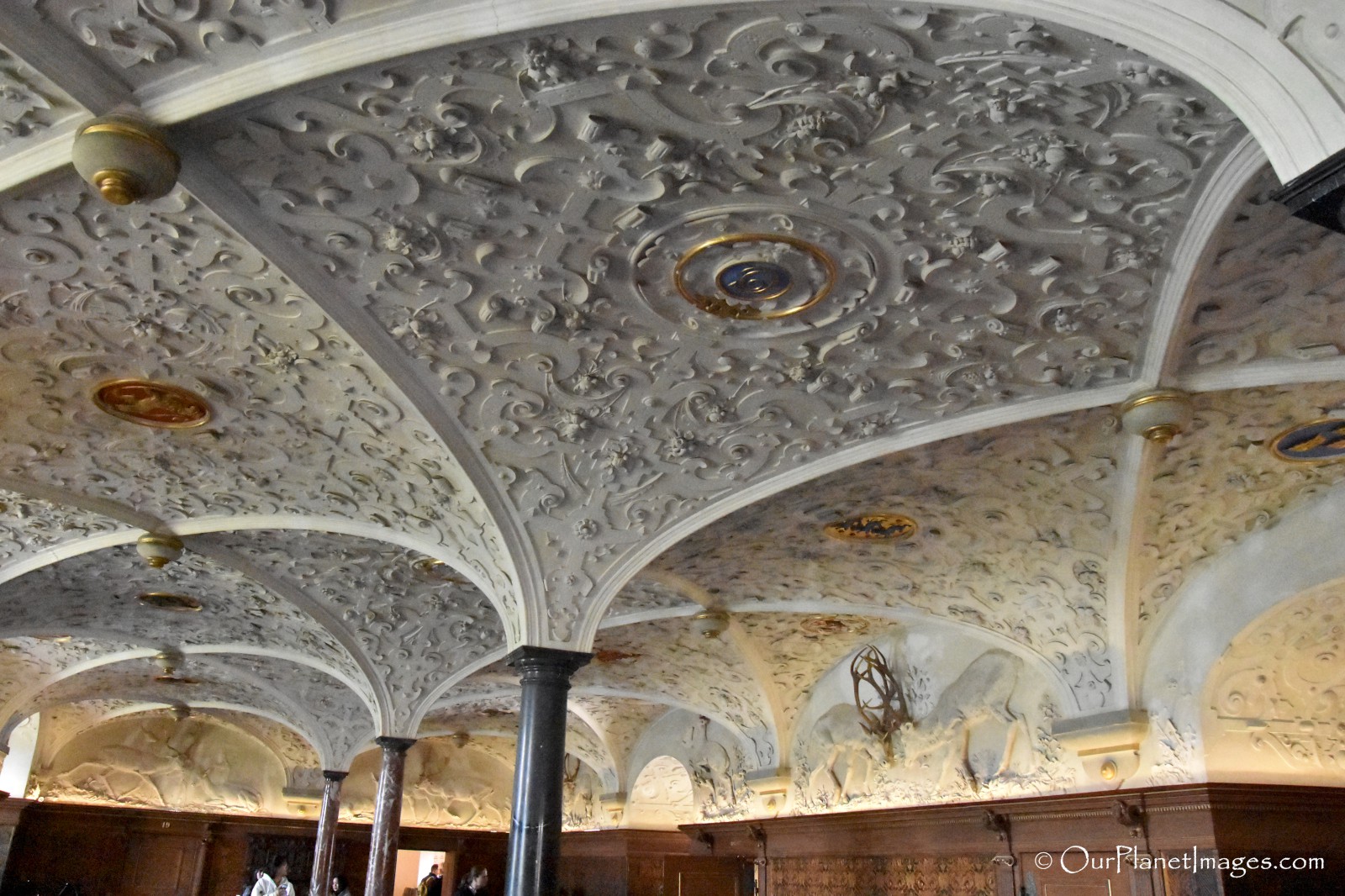
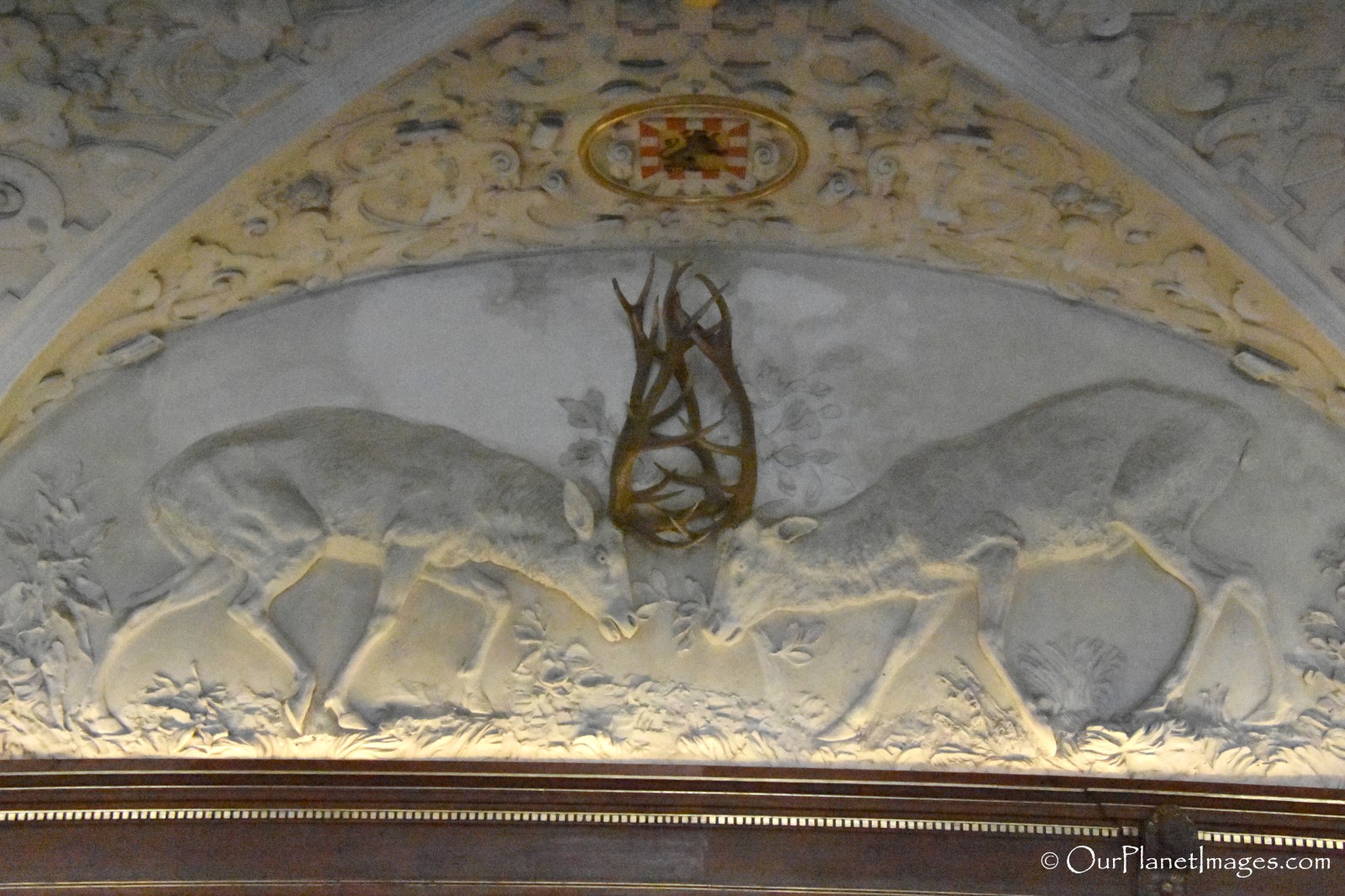
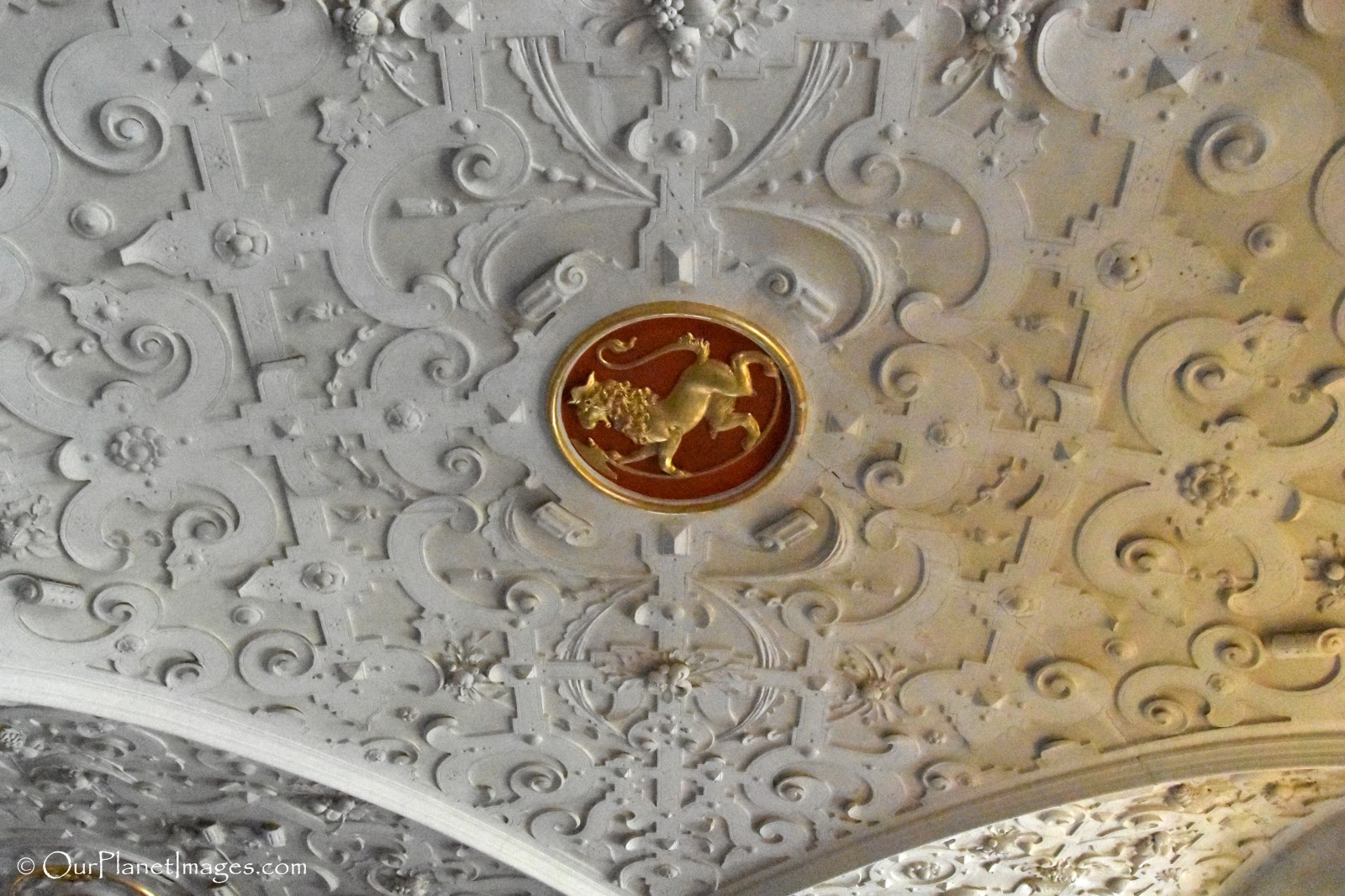
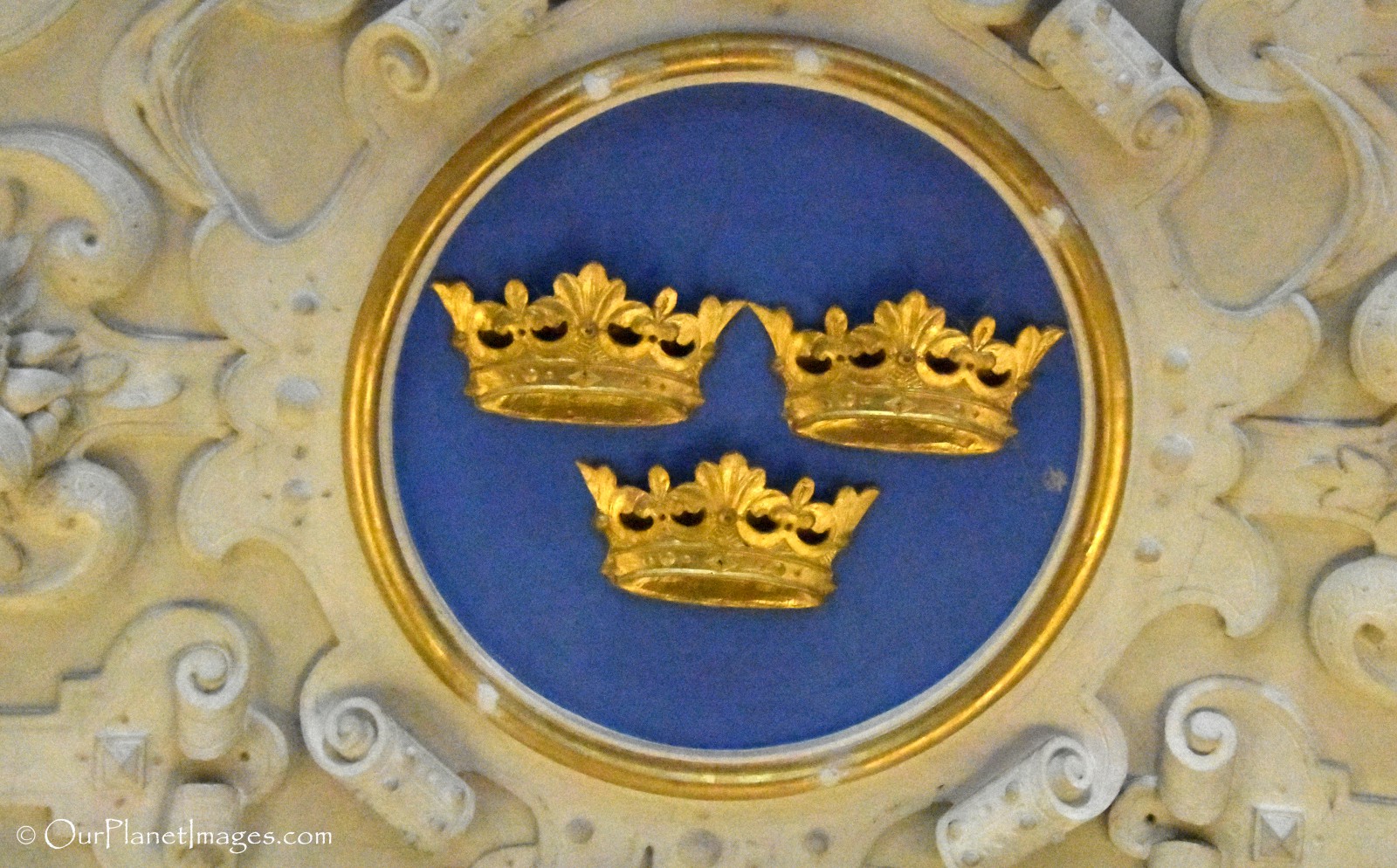
Staircase
The circular staircase that is the passageway into the chapel is lined with hundreds of shields emblazoned with the coat of arms of the houses of Denmark’s royal families. There are over 3,500 of these shields inside the castle.
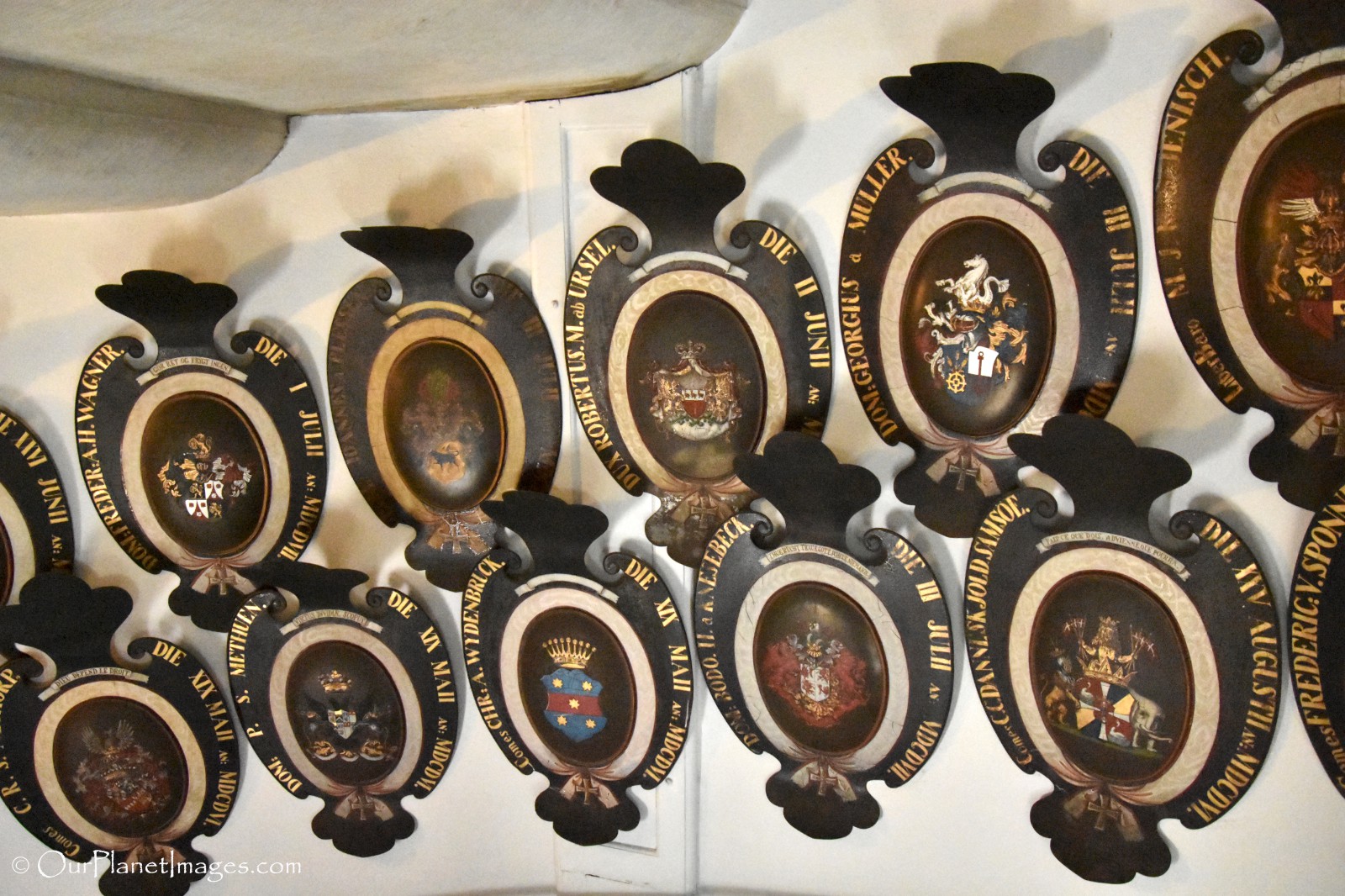
The castle gardens
The castle garden is a baroque style garden that was designed in 1725 and it is the same layout today as it was originally designed. The perimeter of the garden has flowering plants and boxwood bushes form the design of the royal monograms with three different colored rocks giving the boxwood design a pop of color.

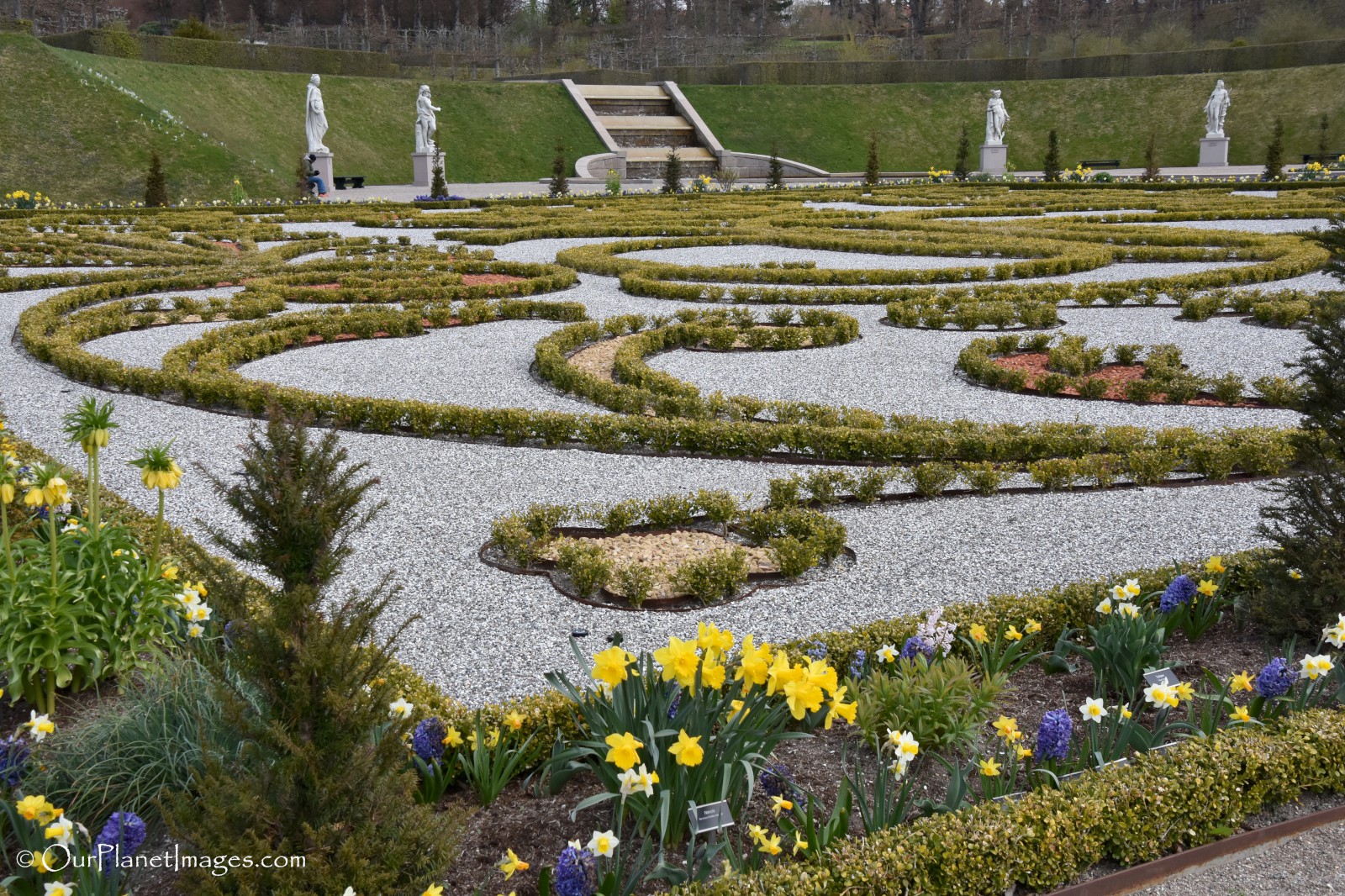
Pond on the castle grounds
The castle grounds is a large wooded area with easy trails with some trails that border small lakes and ponds. An example of the castle grounds is shown in the photo below.
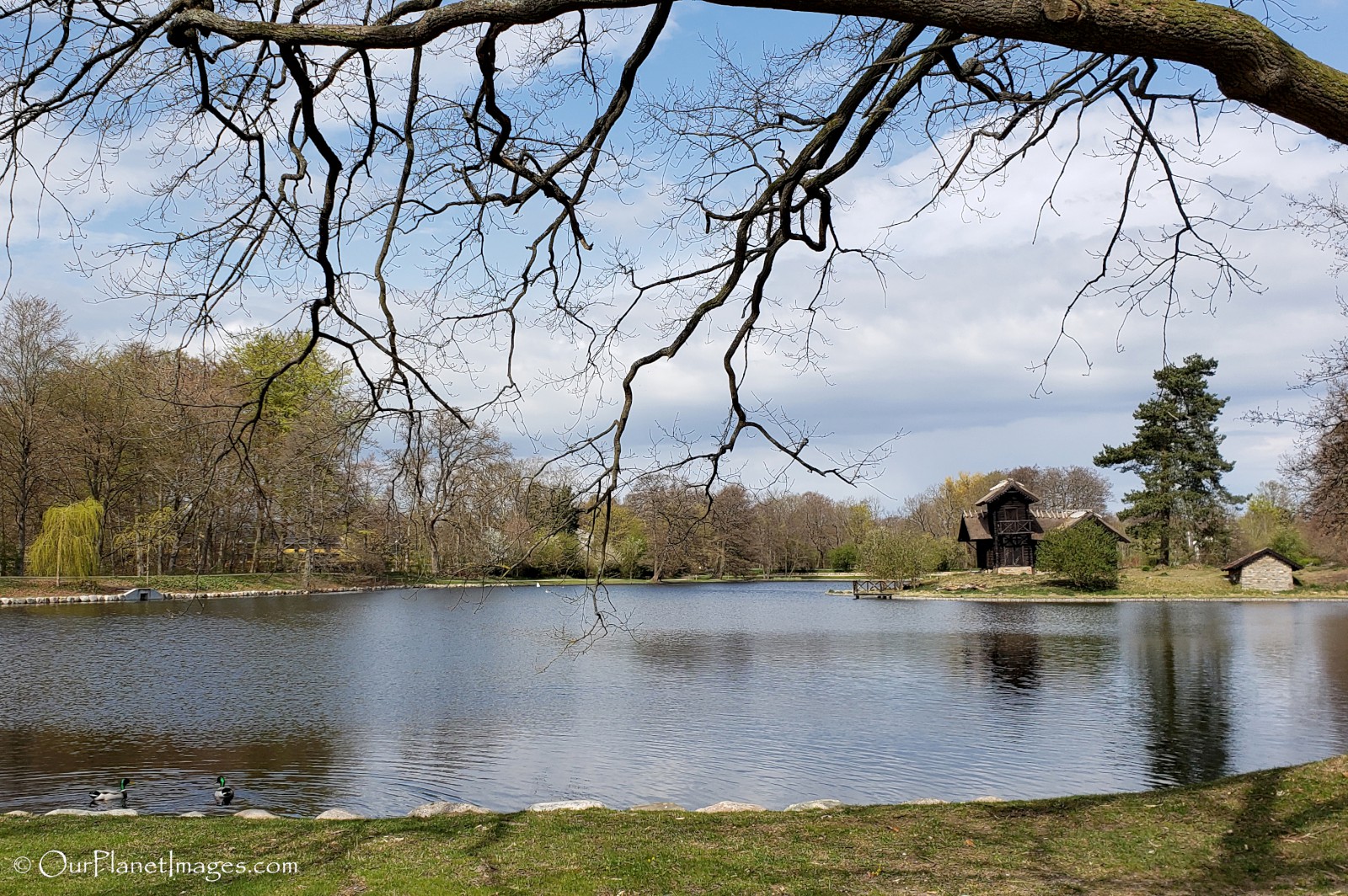
The Dust on My Shoes
Frederiksborg Castle is one of the best castles that I have visited primarily because the Danish Museum of Natural History has staged all of the rooms in the castle with furnishings from different periods of the country’s history for over 500 years. The castle is a true palace that could only be the home of kings and queens.
The castle is much bigger than I had expected with nearly 100 rooms on display. It is a lot take in for a single visit. It is expansive and has intricate details from floor to ceiling in every room. It is not practical to see the entire castle in one visit so try to see the rooms that interest you and plan to visit for at least half a day but make sure to budget a little time to visit the garden and to check out the castle grounds.
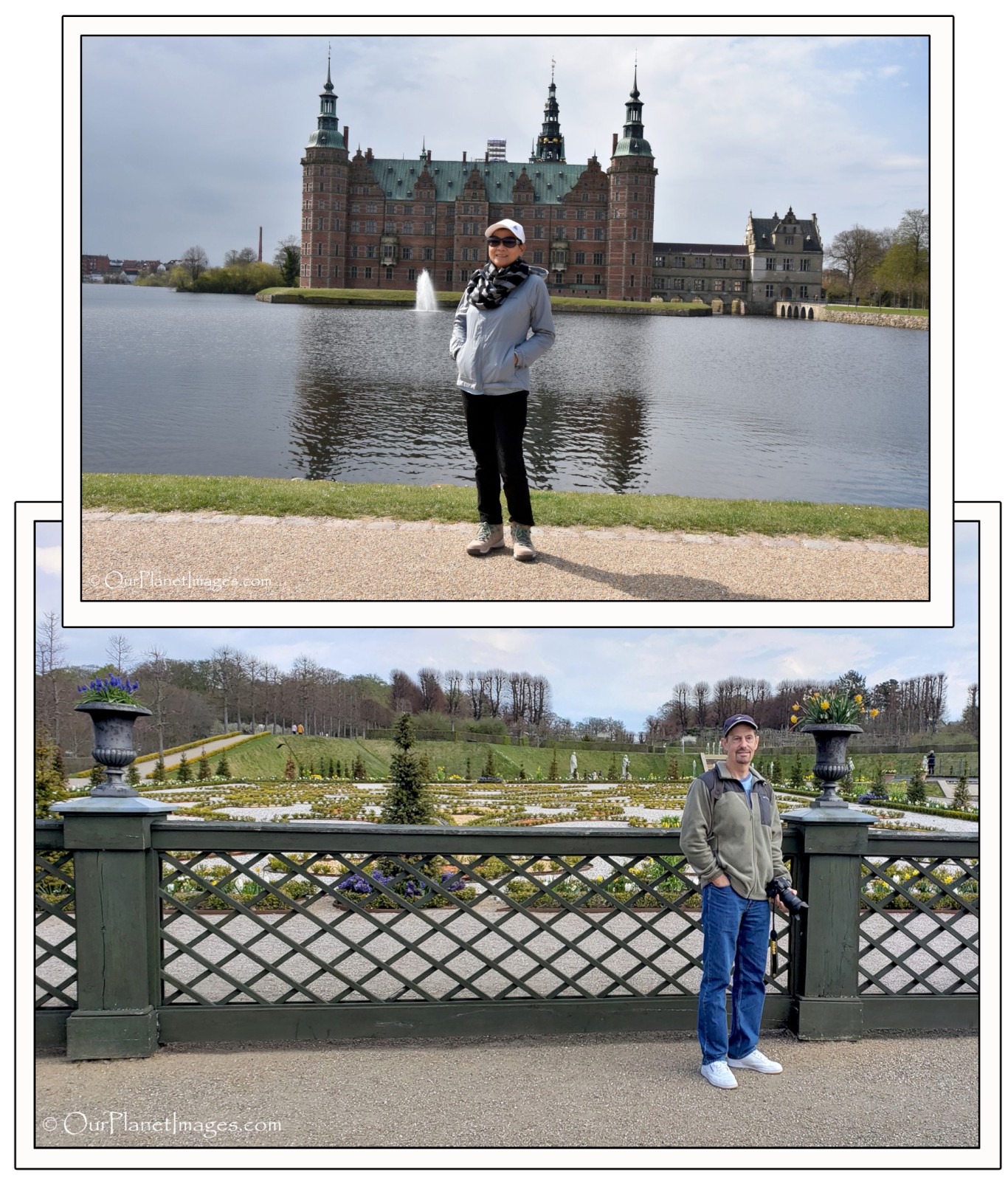
Visiting castles and palaces always amaze me. These are places that I don’t visit often but they do give me an opportunity to see how the wealthiest people in history lived their lives.
